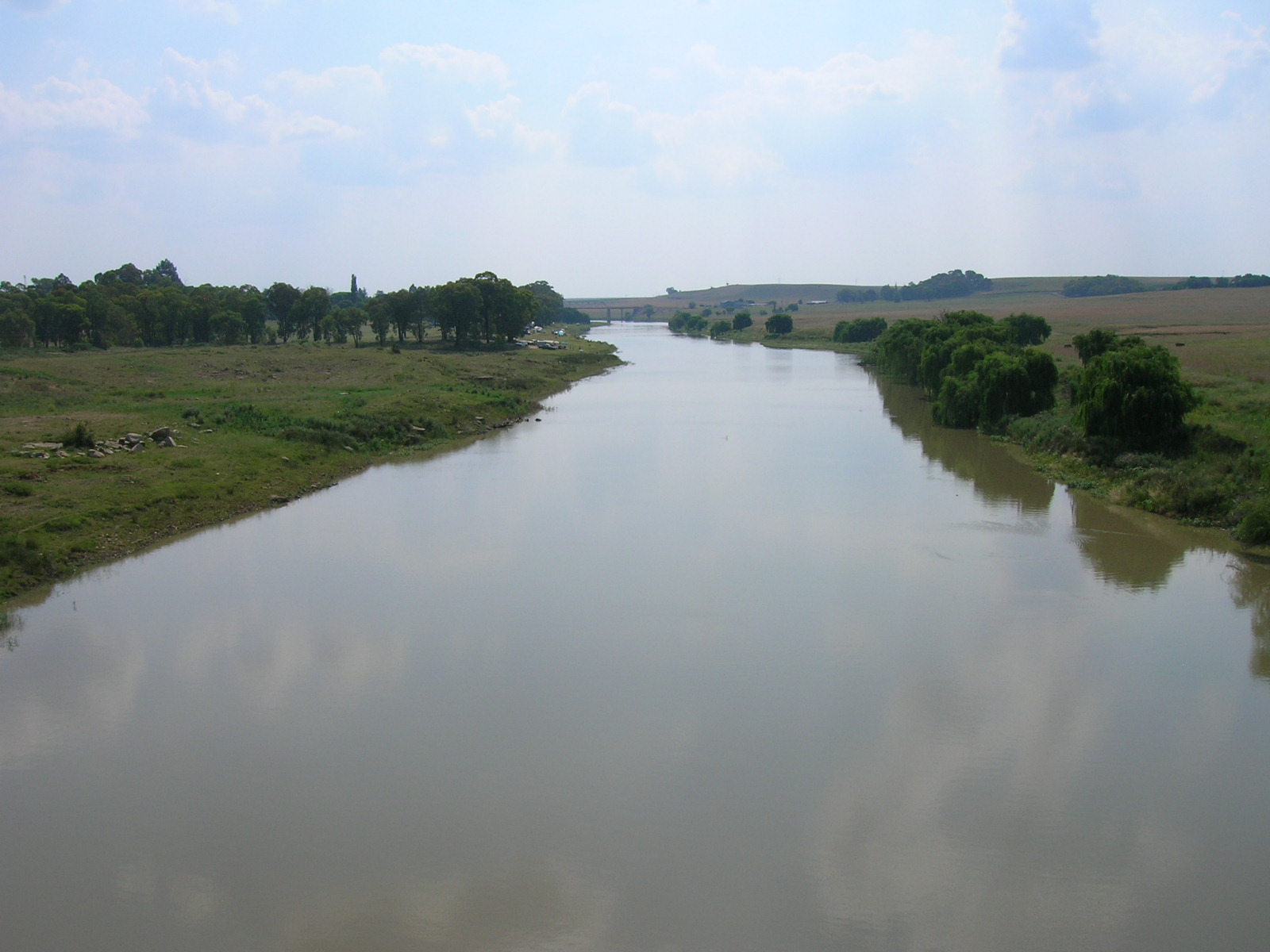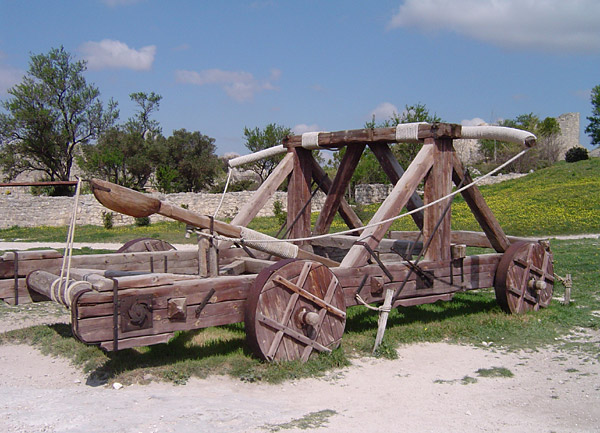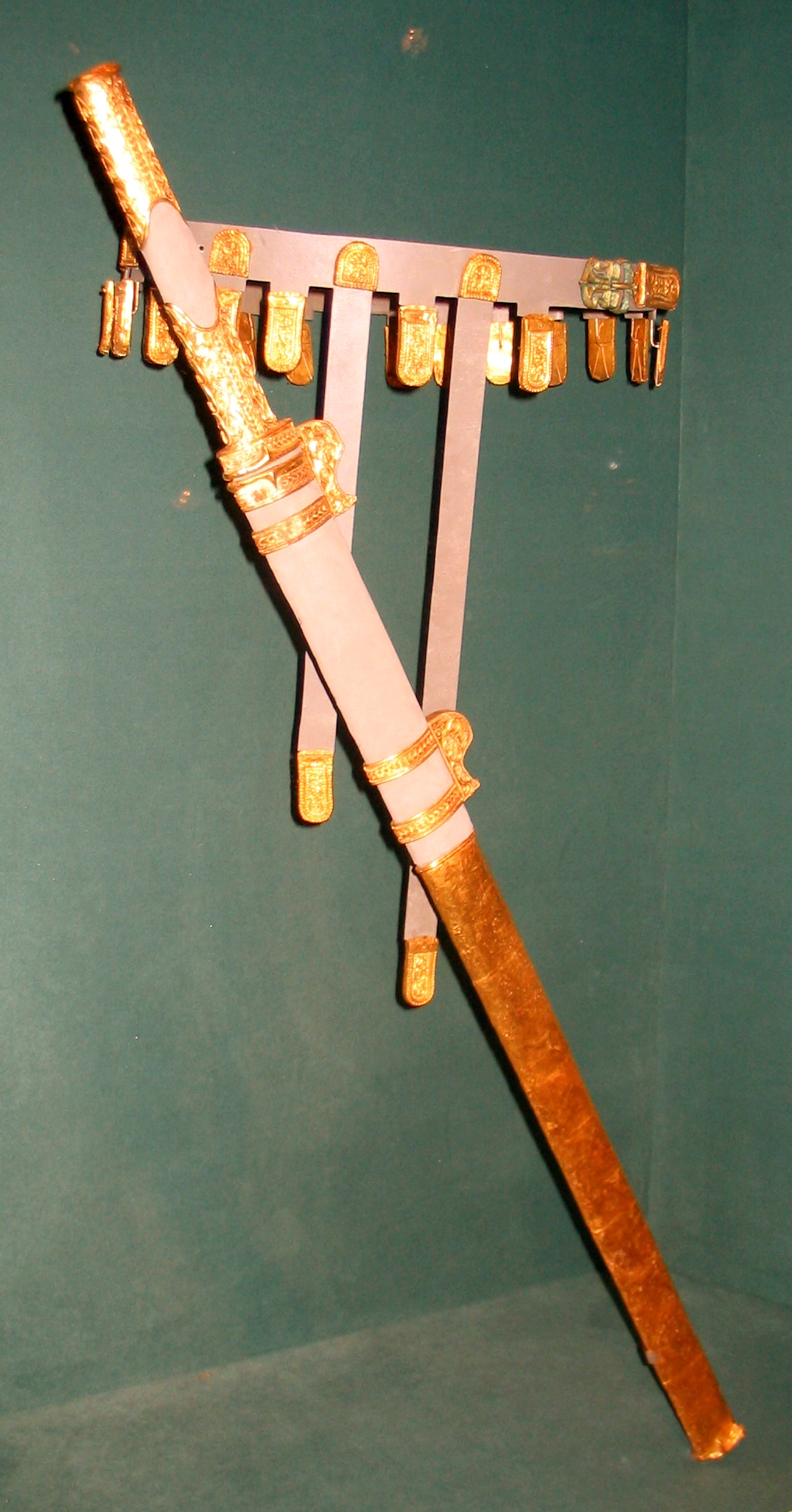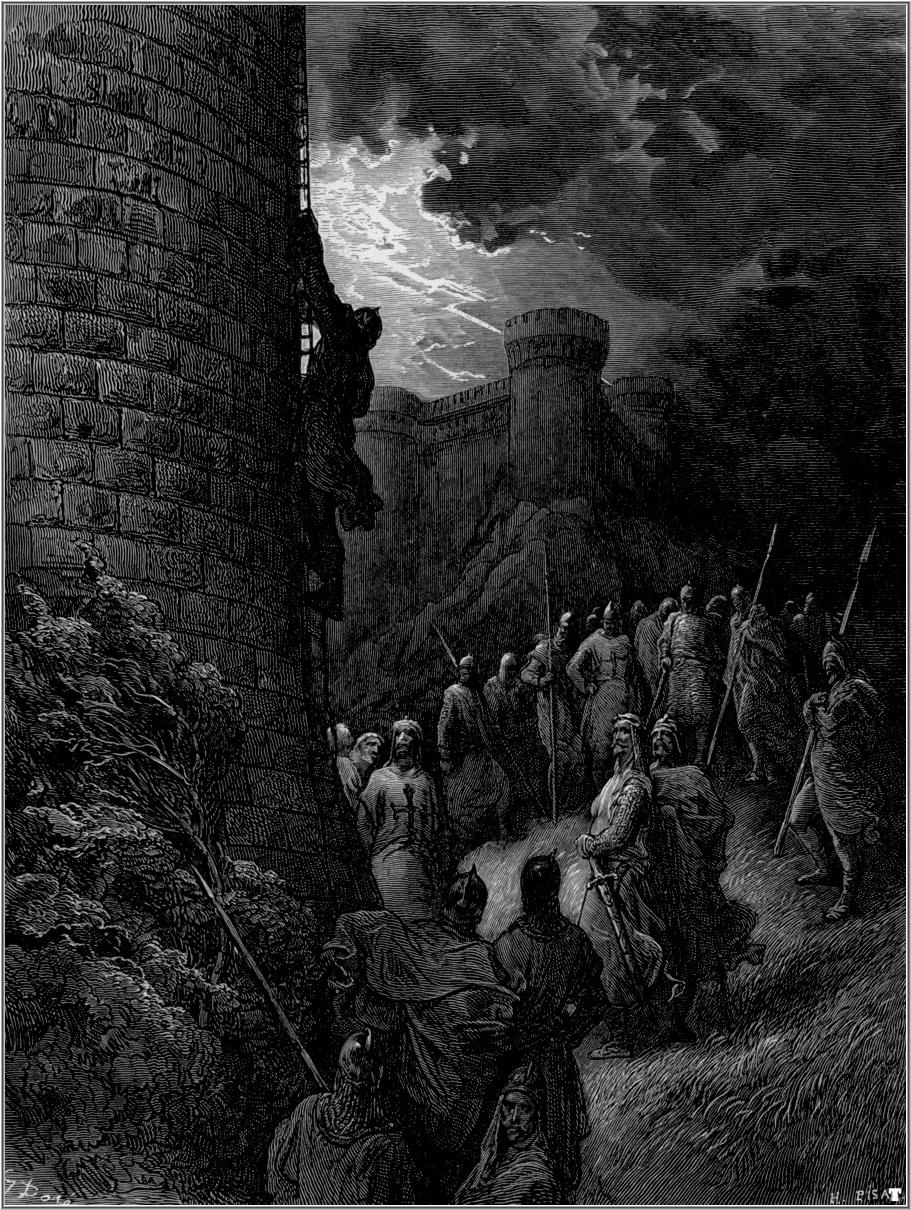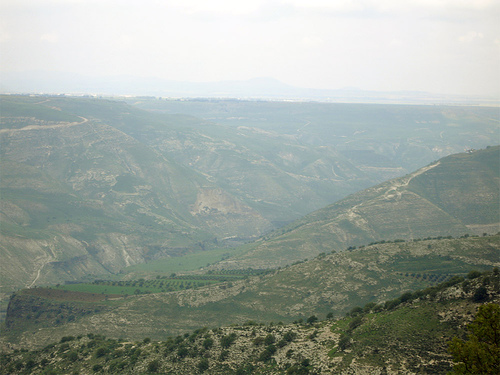Earl_of_Somerset
Banned
Here is the link for the Discussion Thread
https://www.alternatehistory.com/discussion/showthread.php?t=179349
 The Death of an Emperor
The Death of an Emperor
In the Summer of 597 A.D. the Great Emperor Maurice fell ill. He was heading on his way to the Danube Frontier to confront Avar Raiders, who had recently crossed into Roman Lands. Along the way his army made camp along the Morava River. The Water was warm and full of bugs and parisites. Maurice contracted a diease from this Water and the campaign was put to a halt. On his deathbed, Maurice willed for his son Theodosius to become emperor in the East. He then stated he wished his son Tiberius, to become emperor of the western Exarchates and to rule from Rome. After a Priest preformed last rites on Maurice, he passed away on the night of July 17, 597. The soldiers hailed the two sons as Emperors Theodosius III and Tiberius III. About 15,000 soldiers led by Tiberius III branched off from the main army. They marched to the port of Dyrrachium and set sail from Rome to install Tiberius III as Emperor and to depose the Exarchs if needed. Thedosius III marched north towards Avar lands.
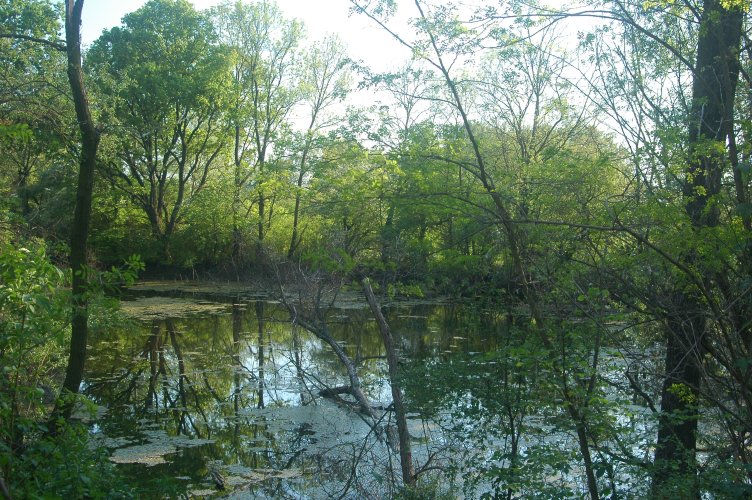
This is assumed site of Maurices' Army camp.
 Part 1 of the Reign of Tiberius III
Part 1 of the Reign of Tiberius III
Tiberius III and his soldiers landed in Ostia in the Autumn of 597. News spread an army was appoarching Rome and Pope Gregory I believed this could be a Lombard Army. Gregory I went out with a few Translators to try to save thier City. Gregory spoke in Latin to his translator, He told the translator to tell that the City of Rome could be thiers, but the citizens of the City would be spared. As the Translator began talking to Tiberius in Gothic, Tiberius III halted him, he told Gregory, that he was willed by his now dead father, Maurice to become the Western Emperor. The Pope at first found this hard to believe, but soon was Convinced by Tiberius III. Tiberius III and his army marched into Rome and a great Celebration was held to celebrate the new Emperor. There had not been an Emperor in 121 Years. Almost immediatly, there was a revolt by the Exarch of Africa. Tiberius III sent 10,000 soldiers to crush this Revolt. Despite initial failure's by Christmas Day the Western Roman Empire had retoke Carthage. News soon arrived that Naples was under siege. In the Spring of 598, Tiberius III led his army to relieve Naples.
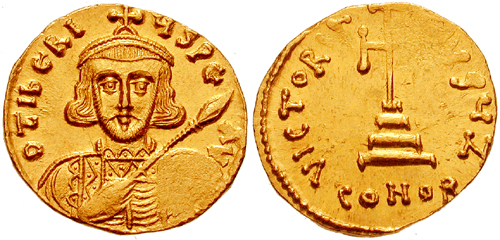
Coins minted to Celebrate the Reign of Tiberius III
 Part 1 of the Reign of Theodosius III
Part 1 of the Reign of Theodosius III
Shortly after being proclaimed Emperor by his Soldiers, Theodosius III went after the Avar raiders. Since 15,000 of his soldiers left with his brother, Theodosius needed a plan to make up for this lack. He decided he would try to lure the Avars deep into Byzantine lands. He thought be fighting Skirmishs and "retreating" south through the Balkan Penninsula where they could trap the Avars and destroy them. This idea worked, but at a cost. Northern Greece and Macedonia were ravaged by the Avar's. After Two years of luring the Avars south, Theodosius III found the place he would engage the Avar's, Thermoplyae Pass. The Eastern Roman Army split into two, one would block the end of the pass, the other would form a "plug" when the Avars entered the pass. As soon as the Avars entered the pass, there fate was sealed. Desperate Calvary and Infantry Charges were not working, but sometimes a few soldiers would be able to break through. In all about 1,000 soldiers got out, but without thier King, who would be taken captive and paraded through Constantinople. After this disaster, the Avars sued for peace in the Summer of 599 Now the problem of repopulating the Danube Frontier needed to be resolved. Theodosius began recruiting Armenians to move to Macedonia and Thrace. Many, Aremnians volunteered for this, Perisa who frequently ravages thier lands, would only possibly be friendly as long as Khorshu II was in power, and that is not guarineteed. In a few years the Armenian Population was almost 3 times as high as the local population.
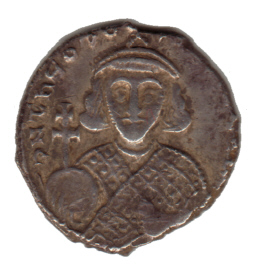
This Coin is the only knowledge of what Theodosius III might have looked like.
 Part 2 of the Reign of Tiberius III
Part 2 of the Reign of Tiberius III
By the Summer of 598, the Western Roman Army arrived at Naples. The locals had thus far managed to prevent the Beneventans from breaking in. When Tiberius III and his army arrived, it compelled the Beneventans to retreat. Tiberius III soon led his Army to march on Beneveto. His Army began to lay siege. However, not all supply lines and communication links were cut off. The Duchy of Spoletto fielded an Army of about 10,000 to relieve the Beneventans. Western Roman Scouts found out about this a few days in Advance. Tiberius III decided to take a gamble, Spoletto was now without any Defenders. The Western Roman Army immediatly marched on Spoletto, and because the Spoletan Army was still heading for Beneveto, the Western Roman Army was already a weeks march ahead. The Spolettan Army made double time towards thier Capital, but the Western Romans had arrived. After Two days of assaults on the City, the Western Roman Army broke in and occupied Spoleto. The Spoletan Soldiers arrived 3 days later, and seeing the Imperial Banner above there City, were disheartened and after a half hearted siege, thier army disbanded by weeks end. After the Fall of one of thier Duchies, for the First time since they invaded Italy, the Lombards sued for peace in 599. However, a new threat was on the Horizon for the Western Roman Empire. The Kingdom of the Visigoths now had a new king Liuva II, whos goal was to retake the Roman Province of Spaniae for the Visigoths. Berber Raids were now escalating, and the combined pressure could destroy the Empire.

The Coat of Arms of the Duchy of Spoleto
 Part 2 of the Reign of Theodosius III
Part 2 of the Reign of Theodosius III
After the Avar threat was gone, and the population of the Danube Region on the rise, Theodosius III began focusing on Internal affairs. One of the most important issues of the time was the depleted treasury. Theodosius' father Maurice was a terrible spender and had plunged the Empire into debt. Theodosius III began massive projects and programs to increase trade. The most enduring project made was the "Maurice Road" which was constructed by Theodosius III and his brother in law, Khorasu II. The road which was created was on a massive scale. The Road would Start in Ctepsion and head Northwest into Roman Syria. The Road would pass through Antioch and the Tarusus Mountains, finally ending in Chalcedon. From Chalcedon, supplies and traders could be ferried across the Borsphourus to Constantinople. The road was designed with rest stops and trade markets every 25 roman miles. The Project would take nearly 35 years and would only be completed right before the Emperors death. Increased trade between the Eastern Roman Empire and the Perisan Empire began. Another of Theodosius III's projects was an ambitious canal to link the Red Sea and Medditerainian Sea. The Project would outlive him by several years and cost the lives of thousands of Slaves. These projects combined with lowering the costs of the Army, began a revitalization of the Eastern Roman economy and a decrease in the debt. In 602, Theodosius III created the "First Legion" which was made up of about 10,000 elite, Veteran Soldiers. It would be used to provide assistance to the Eastern Roman Empires allies
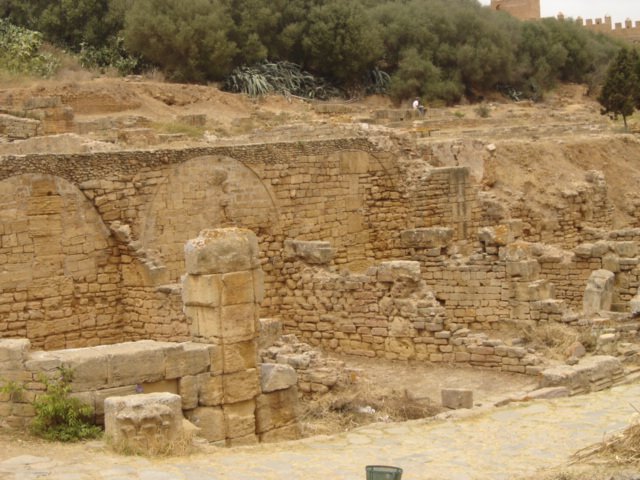
A Remnant of the "Maurice Road" and a neighboring rest stop.
 Map Update!
Map Update!
Here is a map of Italy in the 600th Year of Our Lord.
Blue:Lombardic Kingdoms and Duchies
Leader: Agiluf I
Orange:Western Roman Empire
Leader:Tiberius III

 Part 1 of the War of the Quintuple Alliance
Part 1 of the War of the Quintuple Alliance
In 599, Liuva II was crowned King of the Visigoths. He was as amibitious as he was Wise. Liuva II sent his diplomats to the courts of all of the Western Roman Empire's enemies. He forged an alliance between the Visigoths, Avars, Beneventans, Lombards and Berber raiders. They all decided to strike in 608. The Western Roman Empire was caught unaware and were in a hopless situation. Tiberius III wanted to negotiate with the Visigoths, and was willing to ceede all of Spaniae save for Gades, Gilbraltar and the Baleric Islands, this wasn't enough for the ambitious Liuva II. The Beneventans soon were besieging Naples and the Lombards were besieging Ravenna. The Avars launched multiple raids into Italia. Berber raids escalted and an army was heading for Carthage. In Spanie, all of the Province was lost except for Gilbraltar which was holding out against all the odds. The other pillar of Hercules, Septa, had been taken in a suprise Naval attack. The Western Roman Navy soundly defeated the Visigothic navy in the Battle of Gyneasium, thus preventing an invasion of the Baleric Islands. Notable among the Prisoners was one of the Kings Nephews, who was held hostage in Rome. Soon, The Quintuple alliance was about to fall apart. The Governor of Africa, Hearclius the Elder managed to buy off the Berber raiders before they could sack Carthage. According to rumor Hearclius sold off Holy Relics and vessels to buy of the Berbers, this coupled with false charges of Treason led to his execution in the sping of 609. The Avar raids in Italia also didn't go as planned. Although a group of Avars sacked Rimi and interrupted communication between Rome and Ravenna, another group made a horrible Mistake. A group of Avars instead of heading down into Italia went into Dalmatia. Soon they were in the Eastern Roman Empire. Believing the had arrived at the Western Roman Town of Cervia, they sacked a town and massacred the citizens. After the "Zardar Massacre" the Eastern Roman Empire declared war. The Avar's rushed back home to defend thier land and families, and effectivaly ended thier participation in the attack on the Western Roman Empire. The First Legion, commanded by General Phillipicus was deployed to relieve the Siege of Naples. His Brilliant tactics and decisions would make him one of the most well known Military commanders of all time.
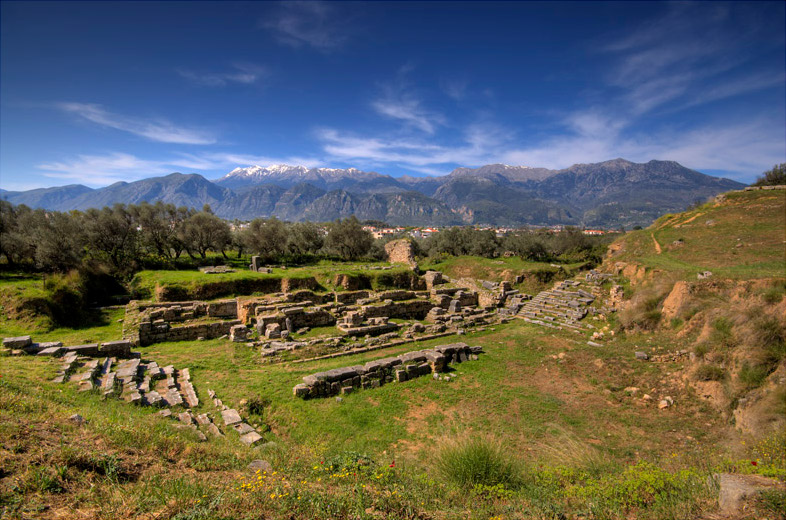
The Ruins of Zardar. Note that modern development can be seen in the backround.
 Part 2 of the War of the Quintuple Alliance
Part 2 of the War of the Quintuple Alliance
Phillipicus and the First Legion arrived in the Eternal City just as Winter set it. He and his army prepared for a hard march to relive Naples, but news soon arrived the City fell. Phillipicus decided to do something never done before. He ordered all timber arond Rome to be cut down. He ordered his First Legion to make small boats which could hold about 20 men each. In Febuary of 609. his boats were ready and he ordered the First Legion forward to sail towards Naples. Phillipicus also ordered the Western Roman Garrison in Rome to move North of Naples. Within a week the fleet was just out of sight of Naples. When the Western Roman Army was detected by the Beneventans, the Beneventan Army in Naples left to attack them, leaving only a small garrison. Phillipicus launched the attack. All the boats headed towards the side of the city which bordered the sea. The ships were ran aground and the Soldiers stormed into the City, in less than an hour Naples was restored to the Western Roman Empire. The Western Roman Army soon arrived to garrison Naples and the First Legion was free for other activities. Phillipicus decided to launch a daring Campaign, the First Legion would take Beneveto. They silently marched towards Beneveto and managed to reach the City in a week. However the City had formidibal walls which were recently rebuilt. Phillipicus without siege engines, needed a clever way to get in. He found the cities weakness, the walls were broken by the a river which flowed through town. Phillipicus had his soldiers "acquire" (Steal) merchant vessels. The First Legion hid thier armour and wore Civilians clothes, they entered the City undetected. When the Sun would set, that would be thier Signal to attack. The Benevetan garrison had no time to react and the City fell to the Western Roman Empire. The last of the Lombard Duchies was gone. In Spaniae, Gilbraltar fell, but at a crippling cost for the Visigoths, for everyone dead Western Roman Soldier, it is estimated another 5 Visigoth soliders died. The Eastern Roman Empire raised the Avar Capital to the ground. Another Eastern Roman Army relieved the Siege of Ravenna and was prepared to strike at the hard of the Lombard Kingdom. Phillipicus would have to face his greatest Challenge yet.

Coat of Arms of Beneveto.
 Map Update!
Map Update!
Here are the initial Invasions of the War of the Quintuple Alliance

 Part 3 of the War of the Quintuple Alliance
Part 3 of the War of the Quintuple Alliance
After the Siege of Ravenna was relieved, the Lombard Kingdom was put on the defensive. Agiluf I, the King of the Lombards began rasing a mighty Army. 50,000 Warriors and 10,000 Horsemen would prove a formidimal match for Phillipicus who just had 25,000 Infantry and 5,000 calvary, less than half then Agiluf I. Phillipicus was granted 7,500 Infantry and 2,500 Calvary and Auxillaries from the Eastern Roman Empire, the rest who had relieved Ravenna were needed back on the Frontiers. The Western Roman Empire provided a simmilar number of troops for Phillipicus' use. Phillipicus began drilling and training his Soldiers. Agiluf I would make the first move. He began a march south to take Rome. Phillipicus' force met then Lombards at the small town of Lucca. There was a thin marsh with tall reeds just outside the city. Phillipicus deployed his soldiers just behind it. In the marsh they set up thier Secret weapon. Sharpened Stakes concealed by the Marsh reeds, capable of killing any Calvarymen who charged there. Agiluf I led a Calvary charge on the left flank of the Roman Position. He and several Calvarymen planned charge through the reeds with ease. After all the marsh was about 10 feet thick, it would be easier to charge then go several hundred yards around the sides. Agiluf I was the first to hit the stakes, he was violently thrown from his Horse and died. When the Calvary of the Lombards retreated, Phillipicus began the strike. With his Elite First Legion on the Left, Western Romans in the Center and Eastern Romans on the right moved to engage the Lombardic Infantry, now under the command of Agiluf's Son. As soon as they made contact with the Lombards, the Western Roman Soldiers moved back, the Lombards in the Center moved forward and the trap began. The Flanks turned to complete the U formation and Calvary soon arrived to close it. The Lombards soon found themselves encircled by the Romans and were slaughtered. The Lombards would suffer 97% casualties and the Romans lose about 20% of thier men in turn. Phillipicus soon toke his Army to a undefended Pavia, the capital of the Lombard Kingdom. The City was sacked so thoughly it would never recover. The Lombard kingdom fell apart into a bunch of small Duchies constantly at war. The Western Roman Empire soon occpied Tuscany returning it to thier Empire. Eventualy the Southern bank of the Po River was established as a frontier for the Empire, and a few costal cities north of that were maintained. However, the Emperor believed Phillipicus was too popular and a potential threat to the Throne, He shipped him and the Eastern Roman troops to the Baleric Islands, then he ordered them to begin a campaign against the Visigoths. From this point on the War of the Quintuple Alliance was known as the First Visigothic War. However, events in the east would prevent Phillipicus from Campaigning in Hispania until the Summer of 611.
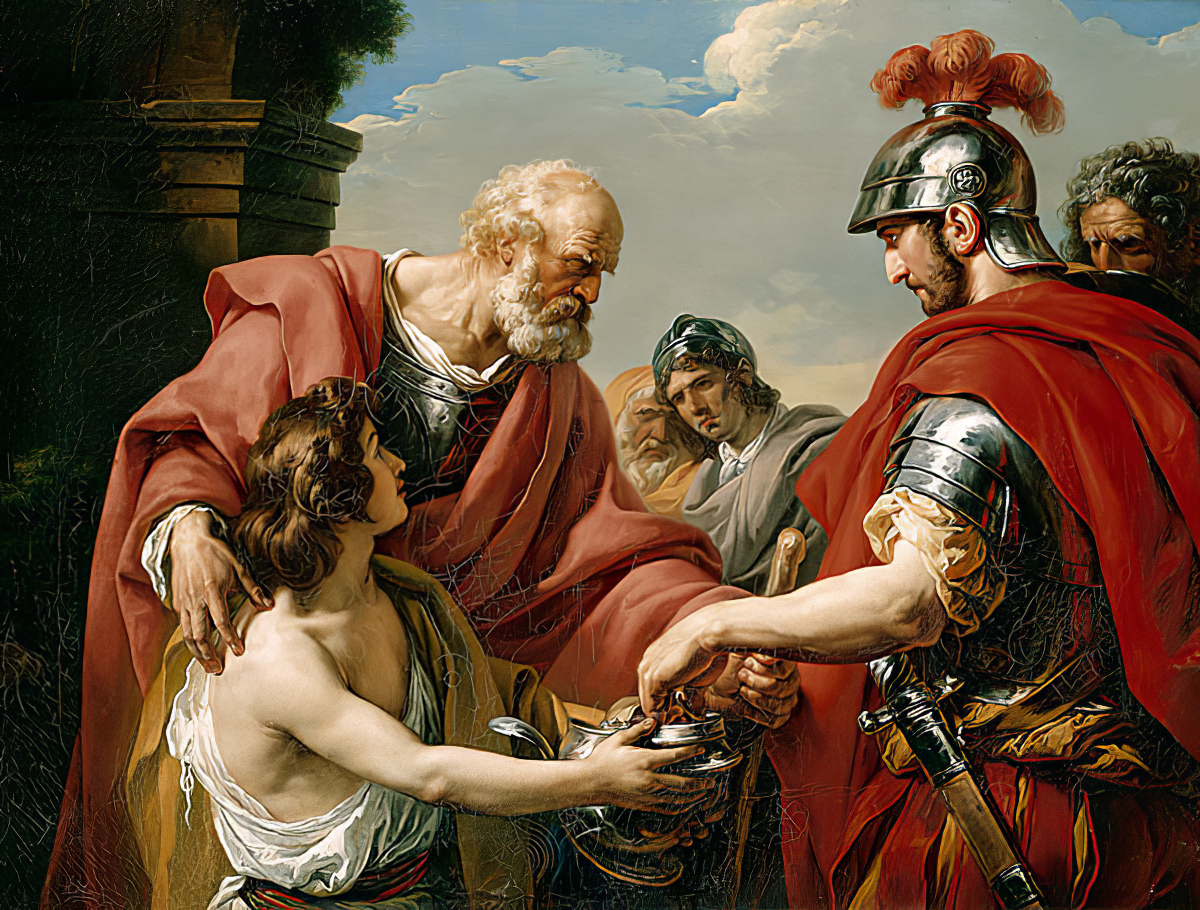
Phillipicus (in uniform on the right) hands out money to a Begger outside of Rome on his way to Lucca.
 The Roman-Sassanid War of 609-611
The Roman-Sassanid War of 609-611
Although Persian-Roman Relations had reached a new apex, there was a still a disre for the Sassanid Persian Dyansty to take control of all lands which made up the Persian Empire of Old. Khorasu II massed an Army of 120,000 Persians to invade Rome, but he feared that even that might not be enough. When the Eastern Roman Empire joined the War of the Qunituple alliance Khorasu II saw his chance to strike. To make a excuse, he had an Assassin murder a member of his family. He blamed that it was Romes doing and began an invasion. Maria, Khorasu's wife and the sister of Theodosius III fled to Constantinople, fearing she could be killed or taken captive. His army split into Three, 40,000 attacking different targets. On Column headed into Asia Minor, Another to Antioch, and a Final one to Jerusalem which would then take Egypt. By Winter, Antioch had fallen and Jerusalem was under Siege. The Army in Asia Minor was heading Northwest towards Constantinople. Theodosius III recalled Phillipicus and his first legion to defeat the Persians. He did leave behind the other 10,000 soldiers to help the Western Empire. Phillipicus arrived back in Constantinople just as Persian Soldiers arrived at Chalcedon, across the Boshporus. Outnumbered 4 to 1, Phillipicus decided to launch a daring attack by Sea. Merchant boats were siezed and converted into War Vessels. Phillipicus landed outside of Chalcedon at night. As day rose, the Persians found themesleves surrounded, as time went on, a further 20,000 soldiers arrived. Phillipicus lacked the soldiers for a complete assault and had to wait until the Spring of 610 when the Persians surrendered. Phillipicus soon was given command of the Entire Eastern Roman Army of 60,000. He planned to take Antioch to compell the Siege of Jerusalem to end. From there he could fight a Defensive war at a very high cost to the Persians. However, It was reported that Jerusalem had fallen as Phillipicus approached Antioch. Most importantly, the True Cross had been taken back as a War Prize and the Chirstians of Jerusalem were massacred. Instead of Taking Antioch and Jerusalem, Theodosius mandated a new task, take back the True Cross and exact revenge. Phillipicus moved into Mespotamia towards Ctephsion, The Persian forces in Antioch and Jerusalem rushed back to defend thier homeland. Phillipicus met the Persian forces outside of Ctephsion. The Persians had a good advantage in Calvary, enough to crush the Roman Flanks. However, the Persian Commander was inept and Phillipicus would use this to his advantage. Phillipicus sent his minor Calvary force off to the Left. The Persian Commander sent nearly his entire Calvary force, commander by himself, to destroy the Roman Calvary. Now, it would be a Infantry Battle. Phillipicus' Infantry was infinitatly superior, and after 2 hours of pitched combat, the Persian Army Routed. In the Autumn of 610, the Roman Army entered Ctephsion. They killed everyone, except for Chirstians, Khorasu II and Kavalid, Maria's infant son. Khorasu II was taken before Theodosius and humiliated, he died in Captivity. Kavaid was named King of the Persians, but his mother Maria was named as Regent. Kavaid II was soon raised as a Christian and adopted the name Justin. However the war was not over yet. Anushjan, a Governor in Persia Proper, raised an army to destroy the "Roman" regime. Phillipicus and the First Legion had departed back for the Baleric Islands, and the Visigothic campaigns. Before that, he stopped in Jerusalem and returned to True Cross to the Church of the Holy Sephelcure. His second in command Nephanatius succeded him. Although, not nearly as good a commander as Phillipicus, the troops under his command were Veterans and were able to soundly defeat the persians at the Battle of Ganzak. In 611, the war was over, Persia returned all taken lands and ceeded more of Armenia. In addition Justin was to be accepted as King of the Persians. Construction of Maurice's Road continued, and Christians became a sizeable minority in the Persian Empire.
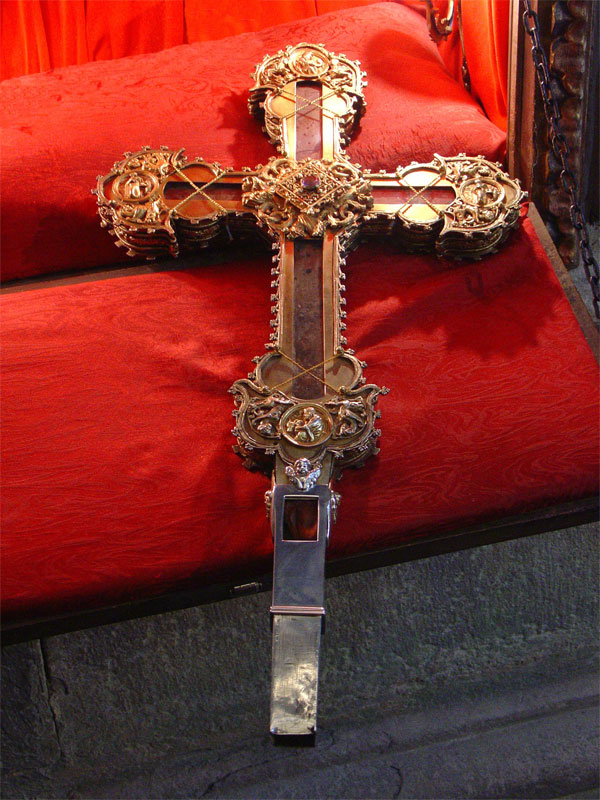
A Remnant of the "True Cross"
 Part 3 of the Reign of Theodosius III
Part 3 of the Reign of Theodosius III
Theodosius III's foreign legion would be used in many wars, Primairly in the War of the Qunituple alliance. It would also save the Eastern Empire, when it and its commander Phillipicus pushed back the Sassanid assault and even installed Justin, Theodosius III's nephew as King of the Persians and Maria as Regent. The Construction of the Maurice Road continued, and with some new improvements. Small aqueducts and canals would bring water to special rest stops every 40 miles apart. They were dubbed "Oasis" by the locals. Theodosius with this new road, began sending Missionaries through it to convert the Persians to the true faith. Soon Ctephsion was a large Christian Center, and with the consent of an Ecenumical Council called by Theodosius, created the Patriarchate of Ctepshion. The First Partiarch was a fromer Neostorian Priest named John, who had converted to mainstream Chirstianity. Theodosius III began a series of administrative reforms as well. First he elevated Greek as the primary Language of the Eastern Roman court, while Latin was demoted to a secondary status. From this point forward the Easter Roman Empire would be known as the Byzantine Empire, named after Byzantium, the city which Constantinople was founded upon. Another important reform was that of Provinces. Theodosius began making Province's of equal size to Church Diocese, and the center of the Province would be the City which contains a Cathederal. Theodosius also with the pressure of the Church, outlawed Capital punishment. If a person were to commit an evil crime, they would be deported to Crimea. Within a few years time, Crimea which used to be rural, was soon overpacked with Prisoners. Soon, enterprizing Prisoners went outside of Crimea and set up small Principalites, centered around small fortress' where the "Princes" lived. Ironically, some were better off because they got deported to Crimea. In 613, Theodosius III's son and hier was born. He was named Anastatius.

St.Thomas the Apostle, creditied with the foundation of the Church in the East
 The First Visigothic War
The First Visigothic War
In 611, the General Phillipicus returned to the Baleric Islands. The First Legion and 10,000 other Eastern Roman Troops began the Invasion of Visigothic Spain. Phillipicus began a series of Campaigns in Southern Spain, Winning every battle, but losing Soldiers. Phillipicus demanded that Tiberius III would send more soldiers to help, but he was sternly refused. Phillipicus and his officers considered returning to the East, but they would face a Rathful Theodosius III there. Phillipicus instead decided to attempt a logicistical nightmare. He and his 15,000 soldiers would attempt to take Toledo and end the Visigothic War early. Using his Calvary to give the enemy a false impression of his Movements. There were about 20,000 defenders of Toledo. Phillipicus had about 3 days to take the city before significant reneforcements would arrive and destroy Phillipicus. The Walls of the city were very high and well guarded. Phillipicus believed the only way in was through Treachary. He bribed the gatekeeper with 30 talons of Gold, more than his army actually had. As soon as the gates were opened a random roman soldier killed the traitor. Phillipicus and his Bodyguard personally trapped the Visigothic King in his palace, the king however would not go down without bringing Phillipicus down with him. The King offered to negotiate terms with Phillipicus, and they discussed surrender terms and peace. In the middle of Negotiations, the King stood up and pulled a dagger from his belt. He lunged at Phillipicus and struck him in the temple. Phillipicus' guards slayed the King and threw the Kings body into the streets. Phillipicus died a few minutes later, Rome had lost a great General. Libellus, one of his Lieutenants, took over and led the Roman Army to Gades. Along the way the Visigothic army confronted them. Although outnumbered 2 to 1 with equal commanders, the Roman army annihilated the Visigothic Army. It is said the Romans fought with such Anger and desire for Revenge, it is said 1 Roman soldier could defeat 100 Visigoths. After arriving in Gades, there was a grand funeral for the fallen Phillipicus. He was burined in a small Chapel contructed on the rock of Gilbaltar, soon renamed Phillipicus Point and the straight of Gilbraltar renamed the straight of Phillipicus. Wittercis I, the new Visigothic King made peace with the Romans. The Province of Spaniae was returned to the size it was at Justinain I's reconquests. Libellus was named Governor of Spaniae. However the Visigoths were planning revenge, and all Romans knew it would come in due time.
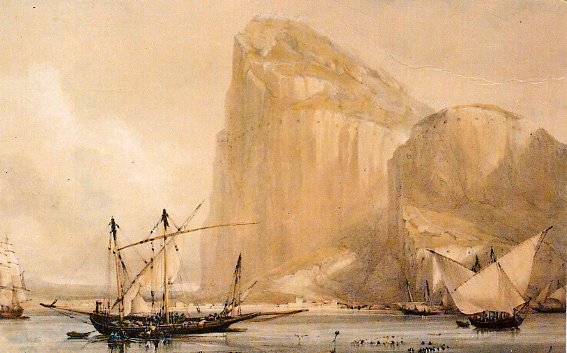
Image of Phillipicus point, the worlds greatest fortress. Phillipicus Point also holds one of the best ports in Europe.
 SPECIAL TRIPLE UPDATE
SPECIAL TRIPLE UPDATE art 3 of the Reign of Tiberius III
art 3 of the Reign of Tiberius III
After the Annexation of Spoletto, Emperor Tiberius III began building up the Western Roman Empire's Army. By the year 608, he had a froce of 30,000. However most were on Defensive duties and only 10,000 were able to be used by the General Phillipicus. After a String of Victories in Italy, Phillipicus had expanded the Western Roman Empire to the banks of the Po. Beyond that were petty Kingdoms ruled by former Lombardic Nobles. None were a threat, and very few could field a army larger than 1000 men. Events in the east temporairly halted the expansion into Hispania. However when Phillipicus returned and began invading the Kingdom of the Visigoths. The Province of Spaniae was expanded to its former size at the time of Justinian I. In 618, Tiberius III had a son, and he was named Aulus. Tiberius III established a Military alliance with the Kingdom of the Franks, who were great enemies of the Visigoths. In 621, there was a revolt amongst the Basque Peoples in the Pyrrenes. At first the Western Roman Empire and the Franks weren't keen to help, but after the Rebels sacked Pampalonae and defeat the Visigothic Army in Battle, the Kingdom of the Franks and the Western Roman Empire. The Plan was for the Romans to invade in the south and the Franks and Rebels to push from the north. A young noble, Witticus decided he would bring the War to Rome itself. He would lead a Visigothic Army of 50,000 men to destroy rome, he was determined to succede where Hannibal had failed.

The Pyrrenes Mountains where the rebellion against the Visigoths began.
 SPECIAL TRIPLE UPDATE
SPECIAL TRIPLE UPDATE art 1 of the Second Visgothic War and Tiberius III's death
art 1 of the Second Visgothic War and Tiberius III's death
Witticus headed on a land route to Italy. A sea route would be infeasable due to Pirates and the superior Western Roman Navy. However, his movements were revealed by a Turncoat and a Frankish Army of 30,000 was raised to intercept the Threat and combined with 20,000 soldiers from the Western Empire, would decisivly defeat the Visigoth Invaders. It was however at the time unclear which direction the Visigoths were heading. Witticus, seeing the Franks as the greater of the threat, decided to get thier Army out of the equation all together. He Marched towards Lyon, to convince the Franks they were invading thier lands. The Frankish Army left towards Lyon and the 20,000 Romans were all alone. Witticus outnumbered the romans more than 2 to 1. They were crushed at the battle of the Rhone. Witticus was prepared to descend on Rome. The First Legion was called to defend the City. Emperor Tiberius III had fled with his Government to Naples. The First Legion was called to come with them, but the new commander Cornelius, swore to defend Rome to the death. Most of the Population had fled by the time Witticus had arrived at Rome. After a Three week siege, the Aurelian walls were broken. Cornelius and his First Legion fough street to street house to house. New tactic's such as the use of "Snipers" (Arches who would aim for Officers and hide in buildings) The First Legion put up a valiant stand, nearly all of them were killed including Cornelius, except about 130 wounded who took refuge in St. Peters Basillica under the protection of the most Powerful man in Western Europe. The First Legion was destroyed. Out of Respect, no other Legion since then has been named the First Legion. The Visigoths sacked rome for the second time in 612. However this was a Phyrric Victory, The Visigoths suffered Very high casualties. About 4/5ths of the Army was Killed or Wounded and Nearly every officer had an arrow in thier head. Witticus however was in possesion of Rome and decided to Negotiate with Tiberius III. The Terms are as follows.

Votive Crown offered to Witticus after his Victory over Rome
 SPECIAL TRIPLE UPDATE
SPECIAL TRIPLE UPDATE art 4 of the reign of Theodosius III
art 4 of the reign of Theodosius III
Theodosius III's main focus was to reduce the debt of the Byzantine Empire left by his father. The First Legion was one of his main assests. The Legion functioned independently and always provided loot for the Emperor. Not only that, they had saved the Empire a numbder of times. When Phillipicus died in Spainae it is said the Emperor wept all day. In 622, upon hearing the Entire legion had been destroyed, the Emperor had a heart attack and barely survived. He would never be the same man again. He went mad to some degree. He reportly would reportedly bang his head against the wall and shout "Goths! give me back my Legion!". The Byzantine Empire needed a stable commander. Phocas, a clever aristocrat and military commander filled in. Phocas was named Consul for Life (or until Theodosius III got better or the next emperor was ready to led. Phocas was secretly a Nestorian, and worked to try to make it the sole theology of the Church. He called the Second Council of Chalcedon in 627. He only invited Nestorian Bishops and paid a few people to pose as other Bishops. The Council voted to impose Nestorianism and none could stop it. Theodosius III was figurehead and Phocas was in Power. Theodosius III fell sick in the winter of 633. He was believed to catch a form of the Plauge. In 634 Theodosius III died soon after Maurice's Road was completed and his son Anastatius II was crowned Byzantine Emperor. Phocas was relieved of his postion, then died in a failed revolt. Nestorianism went on the decline as the Church abandoned it.
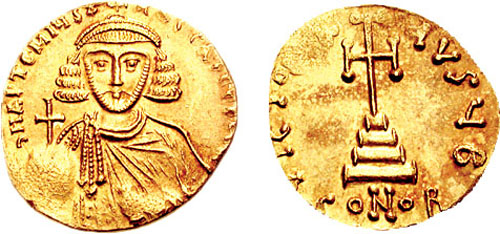
Coins minted during Anastatius II's Riegn
 Map Update!
Map Update!
The World in 634.

 Part 1 of the Reign of Justin I, King of Kings
Part 1 of the Reign of Justin I, King of Kings
In 611, the Infant Khavalid II was raised to King of Persia. His mother, Maria, who was a Christian and a Roman, would have a great influence on him. For the first Ten years of his life, he was sent to a monastary, to study and to educate him in the Chirstian Faith. Khavald II adopted the roman name Justin, and was from then he was known as Justin I. By the time he was about 13, he was sent to many different Schools across Persia. He would learn from great Scholars and Historians. In 627, at the age of 18, Justin I was ready to be King.`He immediatly had a revolt on his hands from the Starap of Northern Iran. Justin I handled it very well. Instead of moving soldiers from the Frontiers where they were needed, he sent about 10,000 raiders to harass and slow down the Revolting army of 50,000. With the Constant harrasment by the Raiders, the Enemy Army took nearly Six Months to reach Ctepshion from Iran. By then, Justin I had raised an army of 65,000 and they were well equiped and well armed. The Revolting Starap had his head cut off and put on a stake. That stake would be planted outside of Ctepshions gates. Then, instead of Disolving the Army, he took it on a Series of Campaigns in Centeral Asia. The Persian Empire again hoped to impose its power up to the Aral Sea. Justin I payed his Soldiers very well, and coupled with his recent Victories, was a very popular King. He began activly supporting Chirstianity and its population in Persia grew. He tolerated all Chirstian Sects, but prefered Catholics. By the time he was 30, in 639 over 10% of the Kingdom was christian. He was also a great Domestic King. He began a new series of Roads which were of the same quality as Rome's. It was now possible to Travel from India to Hispania on high quality Roads, Trade Flourished and Ideas were exchanged with India and China. Justin I had triggered the Third Golden age of Sassanid Persia. However, Relations would be tested when in 634 Theodosius III died, this would provide persia a chance to invade.

Some of the Rough Terrain Encountered during Justin I's Campaigns.
 Technology Update:597-641
Technology Update:597-641
Calvary Repelling Stakes:
Invented by Phillipicus to defend against Calvary Charges. First used in the battle of Lucca (608-609? date unknown)
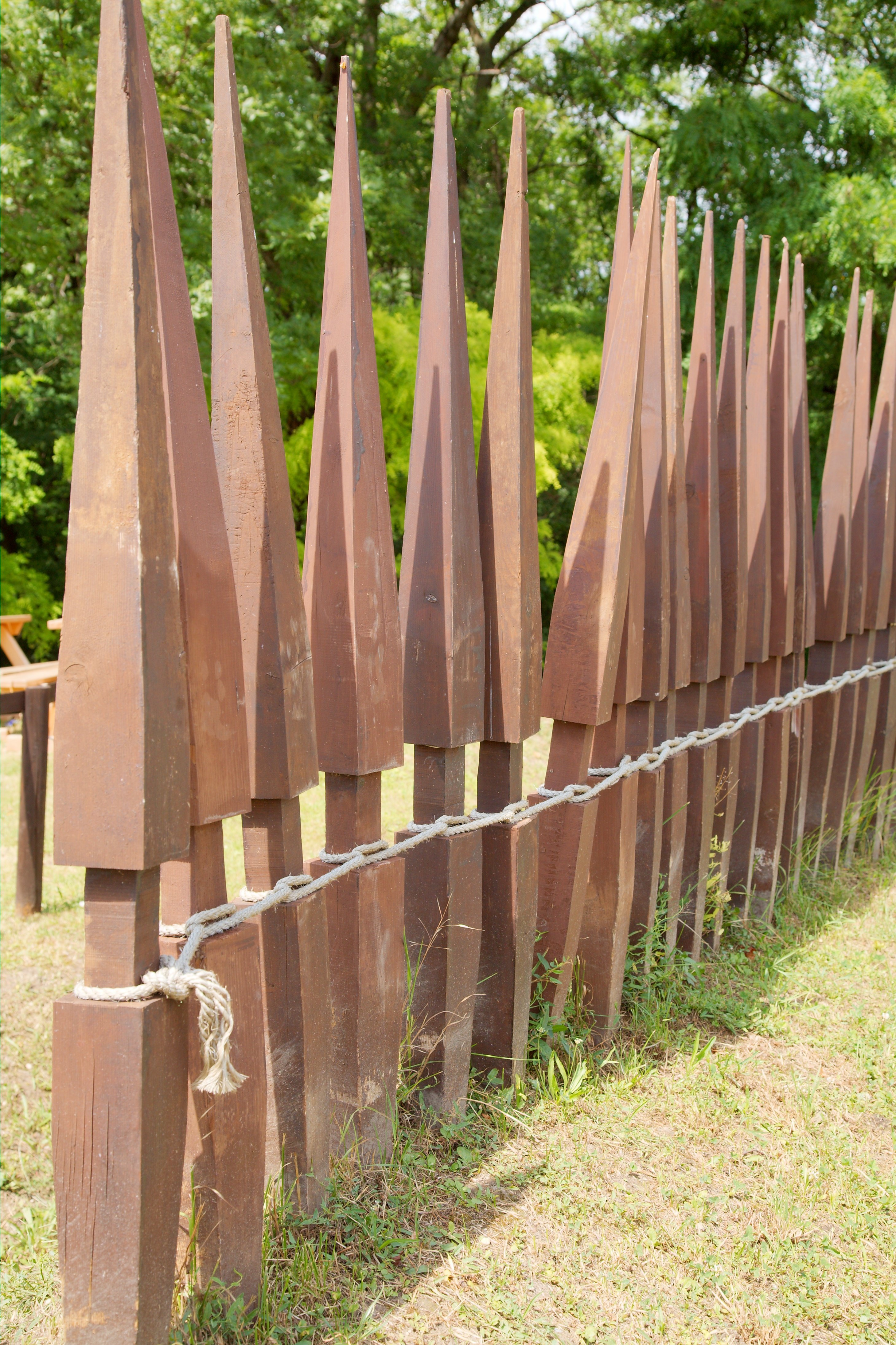
Amphibious Assault boats:
Invented by Phillipicus to land troops on beachs at a rapid pace to suprise and overwhelm the enemy. First used in the Siege of Naples (608)
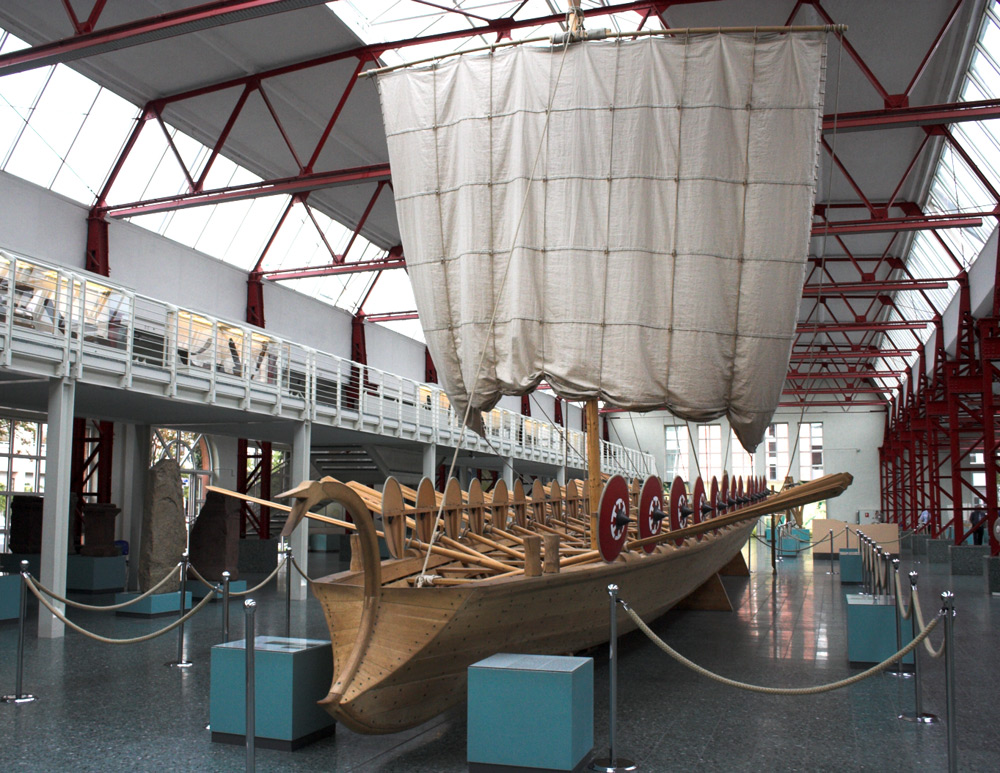
Stirrup: Used to help a horsemen ride his Horse. Believed to origniate from China, they were utilized by the Persians and became in stand use for thier Calvary by 634
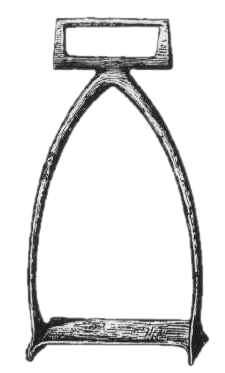
Paper Money: First in use in China, replaced coins as the currency. This saved alot of Gold and Silver for the treasury of China.
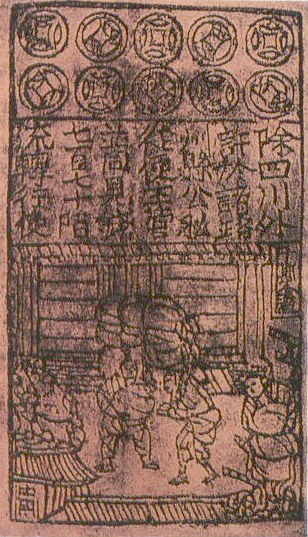
Saxon helmet:
Invented by Saxon raiders attacking England. They gained popularity for being lightwieght and protecting most of the head.
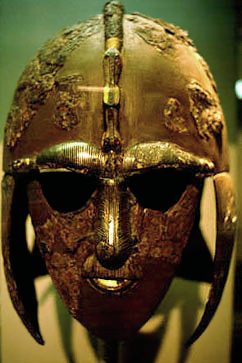
 Part 1 of the Reign of Anasthasius II
Part 1 of the Reign of Anasthasius II
After Anasthasius II, inherited the Byzantine Empire from his unstable Father, it seemed as if the Empire would once again meet prosperitey. However, almost immediatly the Empire was struck with Triple disasters. First was the Great Fire of Constantinople. On a stormy night, lightning struck warehouse full of straw. It immediatly began a massive Fire was was very hard to contain. Over 70% of Constantinople was in Ruins, part of the Hippodrome and most of the Imperial Palace were also very damaged. The Imperial Court was moved to Chalcedon. Flavius Gauis, an enterprizing minor Noble individual took advantage of this. Using his fourtune he bought portions of the City which had been devstated. He then hired workers to rebuild the homes out of stone, Fireproofing them. He then sold these homes to those affect by the Fire for very high Profit. He used these profits to buy more plots of land, Flavius Gaius was soon Rich to a very great degree and was getting Richer every day. Second, there was a failure of Crops in Egypt. Anasthasius II made a deal with Tiberius III, in exchange for Grain from North Africa, The Eastern Roman Empire would provide 10,000 troops to help defend the Western Empire. However, the Third of the Disasters would be the worst of them all. Persian King, Justin I threatened war, unless all of the Achamede Empires formed provinces were returned. Anasthasius II refused. The Roman-Persian wars started up again.
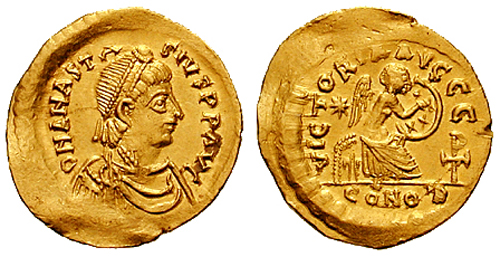
Coins minted to Celebrate the ascension of Anasthasius II. However, with great disasters in the Empire unfolding, there was no reason to Celebrate.
 Part 1 of the Roman Persian war of 634-651
Part 1 of the Roman Persian war of 634-651
Justin I began his invasion against the incompetent Anasthasius II. Justin I, had an army of 80,000, and was raising more troops every day. Justin I sent 20,000 of his soldiers to take Armenia and sent 60,000 Soldiers towards ths Levant. Anasthasius II took 90,000 Soldiers from across the Empire to stop Justin I. Justin I and his Army headed towards Damscas, and Anasthasius II positioned all his Soldiers there. Then Justin I did something which would have made Phillipicus proud. Justin I split his Army in two and sent, one Portion to Antioch and led the other to Jerusalem. These targets both fell very soon after the Persians Arrived, almost all of the defenders they were supposed to have were with Anasthasius II in Damscas. Anasthasius II then made the worst move of the Entire war. He marched all his Soldiers to take Jerusalem. Which was by now, deep in Persian Territory. In addition to this, Justin I took his 50,000 soldiers from Antioch and Armenia and with 30,000 recently raised soldiers planned to destroy Anasthasius II Army. The Roman and Persian armies met at the River Jordan. Anasthasius II led a Calvary Charge across the Jordan River and was Anhilated by the Calvary of the Persians. Anasthasius II was killed and the Roman Armies resistance felll apart. Anasthasius II had no hiers, and other Descendents of Maurice were saught out. After a Succesion Crisis, Paulus, a son of Maurice was declared Emperor. In 642, the Capital was moved back to Constantinople and Petrus began an offensive. With his 60,000 newly raised Soldiers, he managed to take Antioch after a Month of brutal siege warfare. Justin I was invading Egypt at the time and couldn't stop Paulus from taking Antioch. Fearful that Jerusalem could be taken and then he could be trapped in Egypt, Justin I abandoned his Siege of Alexandria and headed north. They met at the town of Acre. Paulus with his 60,000 soldiers confronted an equal amount of Persians who had just come from Egypt. Paulus and the Romans fought the Persians to a stand still, but when the Romans were forced to retreat back to Constantinople, when Petrus who was in his mid Sixities, died of Heatstroke as the sun set. Paulus' son had died many years before, and he had not stated his successor before he died. The Byzantine Empire needed a capable Emperor soon, for the Persians were heading for Antioch, and if that fell, Constantinople would be next.
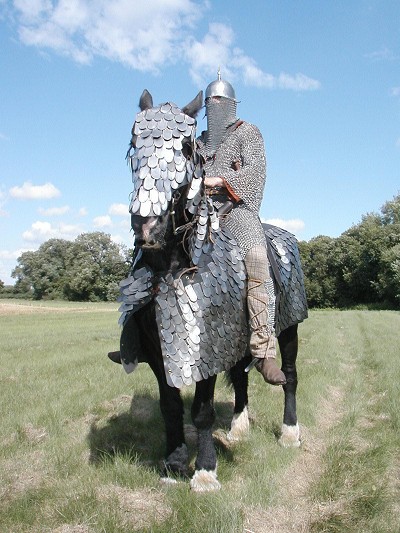
Sassanid Calvary, the backbone of the Military and the reason the Sassanids were able to make rapid conquests.
 Part 2 of the Reign of Anasthasius II and the Year of Four Emperors
Part 2 of the Reign of Anasthasius II and the Year of Four Emperors
The beginning of the Roman-Persian war of 634-651 was a Disaster for Rome. The first province to fall was Armenia, soon followed by Upper Mesoptotamia. An Army of 90,000 was amassed from throughout the Empire, however Anasthasius not only failed to destroy the smaller Persian force, but he lost Jerusalem and Antioch. Soon, his army went against the Perisans in the Battles of Acre. He was killed in Battle and Succeded by Paulus, the Third son of Maurice. Paulus had no hiers and died, shortly after a battle in 642. Upon the hearing this, the Senate in Constantinople proclaimed one of its notable politicians, Dalmatius as Emperor. However, he was within a week of his ascension killed by his guards. They were bribed by Flavius Gaius and soon proclaimed him Emperor. Flavius, almost immediatly began a reign of Terror. He executed almost everyone realted to Maurice. Taxes were raised and the Armies pay lowered. There was an Outcry to remove Flavius Gaius from power, this call would be answered by a Man who was of common blood, had cheated death, and been in the service of the Worlds greatest General. Justinian was only 19, when he entered the First Legion. He proved a good commander and was made a Centurion by Phillipicus. He would often spend most of his free time with Phillipicus discussing tactics ratehr than relaxing like most of the Officers. After the campaign in Spaniae, Justinian retired and married a women by the name of Constinia, his first son was named Phillipicus in honor of the fallen commander. With the outbreak of the Second Visigothic war, Justinian renlisted in the First Legion. In the battle of Rome, he was wounded. He was lucky enough to get wounded by St. Peters basillica and was taken into the Church by a priest. He was one of the 130 who had survived. With the disbandment of the First Legion, Justinian went to Byzantine Istria where he became commander of a small local Garrison. After a few months of Flavius Gaius' rule, the local garrison and Phillipicus revolted. They planned to break into the palace in Constantinople and proclaim Germanus, an advisor to Theodosius III as Emperor. As he and his small garrison headed to Constantinople, many locals joined them. Soon entire units of the Armies were joining them. Flavius tried unsucessfully Bribing them. Soon, the rebel army was at the Gates of Constantinople. Although they had no siege equipment, the Rebel army was able to get in, when an unknown group of Citizens opened the gates. The Rebel army stormed in and rushed for the Imperial Palace. Flavius, decided to flee, but before doing so had Germanus and anyone associated with Marice murdered. As Flavius was crossing the Bosphorus to Chalcedon, he was killed by the sailors on the Boat. When the Rebels reached the Senate Building and Palace, they found Flavius gone and Germanus dead. Soon after hearing Flavius was killed, and with no one else to crown. The rebels hailed Justinian as Emperor Justinian II. Justinian I had reconquered the West, Justinian II would need to reconquer the East.
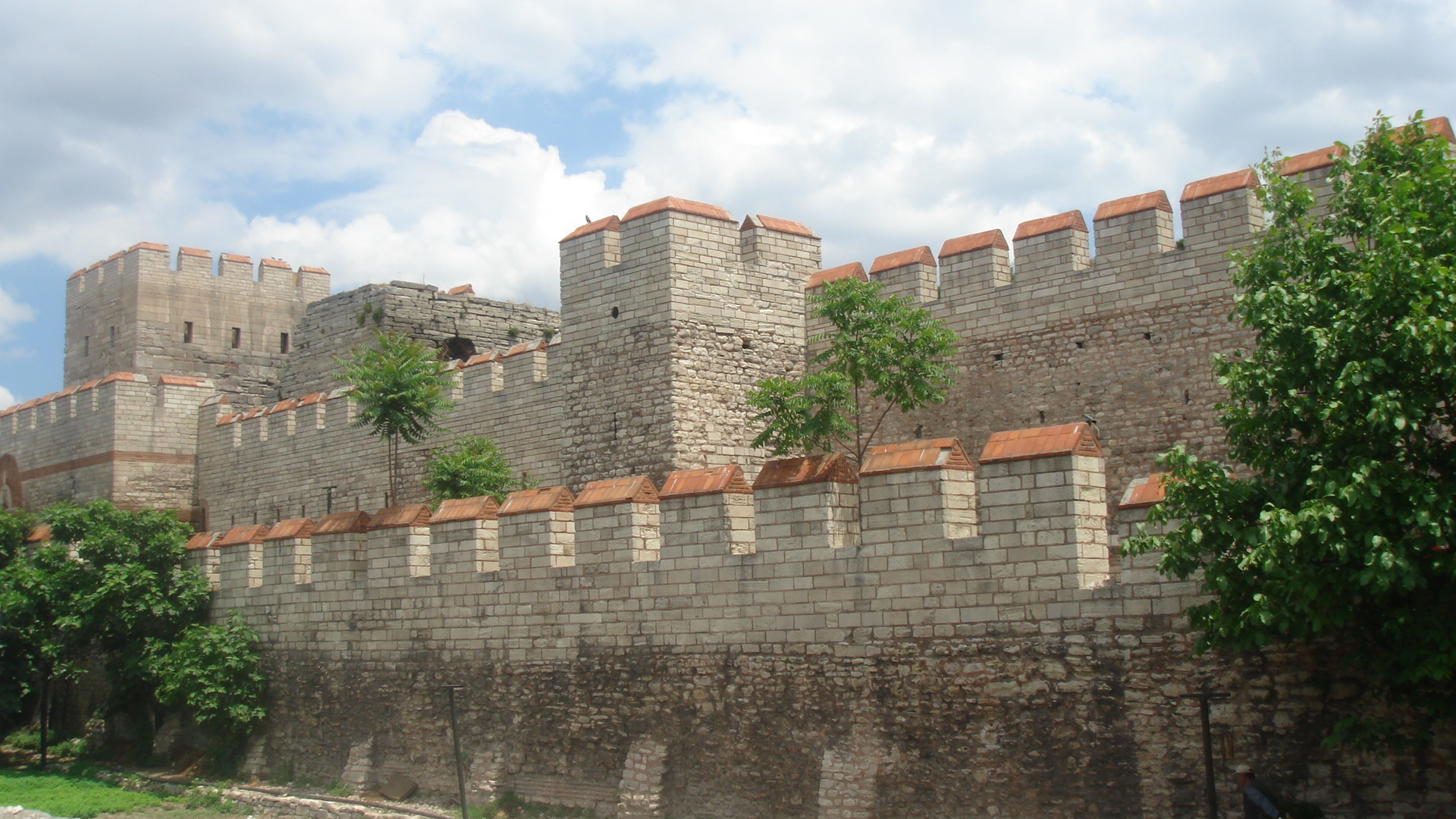
A section of the Theodosian walls. These walls were broken into by the rebels, not through siege, but by insiders opening the gates.
 Map Update!
Map Update!
This is the map of the Medditerainian Sea before the Outbreak of the Roman Persian War of 634-651

 Map Update!
Map Update!
This is the Map of the Medditerainian Sea at the moment of Anasthasius II's death

 Map Update!
Map Update!
Here is a Map of the Medditerainian Sea at the Ascesion of Paulus

 Map Update!
Map Update!
Here is the map of the Medditerainian Sea at the moment of Paulus' Death

 Map Update!
Map Update!
Here is a map of the Medditerainian Sea at the Ascension of Justinian II

https://www.alternatehistory.com/discussion/showthread.php?t=179349
In the Summer of 597 A.D. the Great Emperor Maurice fell ill. He was heading on his way to the Danube Frontier to confront Avar Raiders, who had recently crossed into Roman Lands. Along the way his army made camp along the Morava River. The Water was warm and full of bugs and parisites. Maurice contracted a diease from this Water and the campaign was put to a halt. On his deathbed, Maurice willed for his son Theodosius to become emperor in the East. He then stated he wished his son Tiberius, to become emperor of the western Exarchates and to rule from Rome. After a Priest preformed last rites on Maurice, he passed away on the night of July 17, 597. The soldiers hailed the two sons as Emperors Theodosius III and Tiberius III. About 15,000 soldiers led by Tiberius III branched off from the main army. They marched to the port of Dyrrachium and set sail from Rome to install Tiberius III as Emperor and to depose the Exarchs if needed. Thedosius III marched north towards Avar lands.

This is assumed site of Maurices' Army camp.
Tiberius III and his soldiers landed in Ostia in the Autumn of 597. News spread an army was appoarching Rome and Pope Gregory I believed this could be a Lombard Army. Gregory I went out with a few Translators to try to save thier City. Gregory spoke in Latin to his translator, He told the translator to tell that the City of Rome could be thiers, but the citizens of the City would be spared. As the Translator began talking to Tiberius in Gothic, Tiberius III halted him, he told Gregory, that he was willed by his now dead father, Maurice to become the Western Emperor. The Pope at first found this hard to believe, but soon was Convinced by Tiberius III. Tiberius III and his army marched into Rome and a great Celebration was held to celebrate the new Emperor. There had not been an Emperor in 121 Years. Almost immediatly, there was a revolt by the Exarch of Africa. Tiberius III sent 10,000 soldiers to crush this Revolt. Despite initial failure's by Christmas Day the Western Roman Empire had retoke Carthage. News soon arrived that Naples was under siege. In the Spring of 598, Tiberius III led his army to relieve Naples.

Coins minted to Celebrate the Reign of Tiberius III
Shortly after being proclaimed Emperor by his Soldiers, Theodosius III went after the Avar raiders. Since 15,000 of his soldiers left with his brother, Theodosius needed a plan to make up for this lack. He decided he would try to lure the Avars deep into Byzantine lands. He thought be fighting Skirmishs and "retreating" south through the Balkan Penninsula where they could trap the Avars and destroy them. This idea worked, but at a cost. Northern Greece and Macedonia were ravaged by the Avar's. After Two years of luring the Avars south, Theodosius III found the place he would engage the Avar's, Thermoplyae Pass. The Eastern Roman Army split into two, one would block the end of the pass, the other would form a "plug" when the Avars entered the pass. As soon as the Avars entered the pass, there fate was sealed. Desperate Calvary and Infantry Charges were not working, but sometimes a few soldiers would be able to break through. In all about 1,000 soldiers got out, but without thier King, who would be taken captive and paraded through Constantinople. After this disaster, the Avars sued for peace in the Summer of 599 Now the problem of repopulating the Danube Frontier needed to be resolved. Theodosius began recruiting Armenians to move to Macedonia and Thrace. Many, Aremnians volunteered for this, Perisa who frequently ravages thier lands, would only possibly be friendly as long as Khorshu II was in power, and that is not guarineteed. In a few years the Armenian Population was almost 3 times as high as the local population.

This Coin is the only knowledge of what Theodosius III might have looked like.
By the Summer of 598, the Western Roman Army arrived at Naples. The locals had thus far managed to prevent the Beneventans from breaking in. When Tiberius III and his army arrived, it compelled the Beneventans to retreat. Tiberius III soon led his Army to march on Beneveto. His Army began to lay siege. However, not all supply lines and communication links were cut off. The Duchy of Spoletto fielded an Army of about 10,000 to relieve the Beneventans. Western Roman Scouts found out about this a few days in Advance. Tiberius III decided to take a gamble, Spoletto was now without any Defenders. The Western Roman Army immediatly marched on Spoletto, and because the Spoletan Army was still heading for Beneveto, the Western Roman Army was already a weeks march ahead. The Spolettan Army made double time towards thier Capital, but the Western Romans had arrived. After Two days of assaults on the City, the Western Roman Army broke in and occupied Spoleto. The Spoletan Soldiers arrived 3 days later, and seeing the Imperial Banner above there City, were disheartened and after a half hearted siege, thier army disbanded by weeks end. After the Fall of one of thier Duchies, for the First time since they invaded Italy, the Lombards sued for peace in 599. However, a new threat was on the Horizon for the Western Roman Empire. The Kingdom of the Visigoths now had a new king Liuva II, whos goal was to retake the Roman Province of Spaniae for the Visigoths. Berber Raids were now escalating, and the combined pressure could destroy the Empire.

The Coat of Arms of the Duchy of Spoleto
After the Avar threat was gone, and the population of the Danube Region on the rise, Theodosius III began focusing on Internal affairs. One of the most important issues of the time was the depleted treasury. Theodosius' father Maurice was a terrible spender and had plunged the Empire into debt. Theodosius III began massive projects and programs to increase trade. The most enduring project made was the "Maurice Road" which was constructed by Theodosius III and his brother in law, Khorasu II. The road which was created was on a massive scale. The Road would Start in Ctepsion and head Northwest into Roman Syria. The Road would pass through Antioch and the Tarusus Mountains, finally ending in Chalcedon. From Chalcedon, supplies and traders could be ferried across the Borsphourus to Constantinople. The road was designed with rest stops and trade markets every 25 roman miles. The Project would take nearly 35 years and would only be completed right before the Emperors death. Increased trade between the Eastern Roman Empire and the Perisan Empire began. Another of Theodosius III's projects was an ambitious canal to link the Red Sea and Medditerainian Sea. The Project would outlive him by several years and cost the lives of thousands of Slaves. These projects combined with lowering the costs of the Army, began a revitalization of the Eastern Roman economy and a decrease in the debt. In 602, Theodosius III created the "First Legion" which was made up of about 10,000 elite, Veteran Soldiers. It would be used to provide assistance to the Eastern Roman Empires allies

A Remnant of the "Maurice Road" and a neighboring rest stop.
Here is a map of Italy in the 600th Year of Our Lord.
Blue:Lombardic Kingdoms and Duchies
Leader: Agiluf I
Orange:Western Roman Empire
Leader:Tiberius III
In 599, Liuva II was crowned King of the Visigoths. He was as amibitious as he was Wise. Liuva II sent his diplomats to the courts of all of the Western Roman Empire's enemies. He forged an alliance between the Visigoths, Avars, Beneventans, Lombards and Berber raiders. They all decided to strike in 608. The Western Roman Empire was caught unaware and were in a hopless situation. Tiberius III wanted to negotiate with the Visigoths, and was willing to ceede all of Spaniae save for Gades, Gilbraltar and the Baleric Islands, this wasn't enough for the ambitious Liuva II. The Beneventans soon were besieging Naples and the Lombards were besieging Ravenna. The Avars launched multiple raids into Italia. Berber raids escalted and an army was heading for Carthage. In Spanie, all of the Province was lost except for Gilbraltar which was holding out against all the odds. The other pillar of Hercules, Septa, had been taken in a suprise Naval attack. The Western Roman Navy soundly defeated the Visigothic navy in the Battle of Gyneasium, thus preventing an invasion of the Baleric Islands. Notable among the Prisoners was one of the Kings Nephews, who was held hostage in Rome. Soon, The Quintuple alliance was about to fall apart. The Governor of Africa, Hearclius the Elder managed to buy off the Berber raiders before they could sack Carthage. According to rumor Hearclius sold off Holy Relics and vessels to buy of the Berbers, this coupled with false charges of Treason led to his execution in the sping of 609. The Avar raids in Italia also didn't go as planned. Although a group of Avars sacked Rimi and interrupted communication between Rome and Ravenna, another group made a horrible Mistake. A group of Avars instead of heading down into Italia went into Dalmatia. Soon they were in the Eastern Roman Empire. Believing the had arrived at the Western Roman Town of Cervia, they sacked a town and massacred the citizens. After the "Zardar Massacre" the Eastern Roman Empire declared war. The Avar's rushed back home to defend thier land and families, and effectivaly ended thier participation in the attack on the Western Roman Empire. The First Legion, commanded by General Phillipicus was deployed to relieve the Siege of Naples. His Brilliant tactics and decisions would make him one of the most well known Military commanders of all time.

The Ruins of Zardar. Note that modern development can be seen in the backround.
Phillipicus and the First Legion arrived in the Eternal City just as Winter set it. He and his army prepared for a hard march to relive Naples, but news soon arrived the City fell. Phillipicus decided to do something never done before. He ordered all timber arond Rome to be cut down. He ordered his First Legion to make small boats which could hold about 20 men each. In Febuary of 609. his boats were ready and he ordered the First Legion forward to sail towards Naples. Phillipicus also ordered the Western Roman Garrison in Rome to move North of Naples. Within a week the fleet was just out of sight of Naples. When the Western Roman Army was detected by the Beneventans, the Beneventan Army in Naples left to attack them, leaving only a small garrison. Phillipicus launched the attack. All the boats headed towards the side of the city which bordered the sea. The ships were ran aground and the Soldiers stormed into the City, in less than an hour Naples was restored to the Western Roman Empire. The Western Roman Army soon arrived to garrison Naples and the First Legion was free for other activities. Phillipicus decided to launch a daring Campaign, the First Legion would take Beneveto. They silently marched towards Beneveto and managed to reach the City in a week. However the City had formidibal walls which were recently rebuilt. Phillipicus without siege engines, needed a clever way to get in. He found the cities weakness, the walls were broken by the a river which flowed through town. Phillipicus had his soldiers "acquire" (Steal) merchant vessels. The First Legion hid thier armour and wore Civilians clothes, they entered the City undetected. When the Sun would set, that would be thier Signal to attack. The Benevetan garrison had no time to react and the City fell to the Western Roman Empire. The last of the Lombard Duchies was gone. In Spaniae, Gilbraltar fell, but at a crippling cost for the Visigoths, for everyone dead Western Roman Soldier, it is estimated another 5 Visigoth soliders died. The Eastern Roman Empire raised the Avar Capital to the ground. Another Eastern Roman Army relieved the Siege of Ravenna and was prepared to strike at the hard of the Lombard Kingdom. Phillipicus would have to face his greatest Challenge yet.

Coat of Arms of Beneveto.
Here are the initial Invasions of the War of the Quintuple Alliance
After the Siege of Ravenna was relieved, the Lombard Kingdom was put on the defensive. Agiluf I, the King of the Lombards began rasing a mighty Army. 50,000 Warriors and 10,000 Horsemen would prove a formidimal match for Phillipicus who just had 25,000 Infantry and 5,000 calvary, less than half then Agiluf I. Phillipicus was granted 7,500 Infantry and 2,500 Calvary and Auxillaries from the Eastern Roman Empire, the rest who had relieved Ravenna were needed back on the Frontiers. The Western Roman Empire provided a simmilar number of troops for Phillipicus' use. Phillipicus began drilling and training his Soldiers. Agiluf I would make the first move. He began a march south to take Rome. Phillipicus' force met then Lombards at the small town of Lucca. There was a thin marsh with tall reeds just outside the city. Phillipicus deployed his soldiers just behind it. In the marsh they set up thier Secret weapon. Sharpened Stakes concealed by the Marsh reeds, capable of killing any Calvarymen who charged there. Agiluf I led a Calvary charge on the left flank of the Roman Position. He and several Calvarymen planned charge through the reeds with ease. After all the marsh was about 10 feet thick, it would be easier to charge then go several hundred yards around the sides. Agiluf I was the first to hit the stakes, he was violently thrown from his Horse and died. When the Calvary of the Lombards retreated, Phillipicus began the strike. With his Elite First Legion on the Left, Western Romans in the Center and Eastern Romans on the right moved to engage the Lombardic Infantry, now under the command of Agiluf's Son. As soon as they made contact with the Lombards, the Western Roman Soldiers moved back, the Lombards in the Center moved forward and the trap began. The Flanks turned to complete the U formation and Calvary soon arrived to close it. The Lombards soon found themselves encircled by the Romans and were slaughtered. The Lombards would suffer 97% casualties and the Romans lose about 20% of thier men in turn. Phillipicus soon toke his Army to a undefended Pavia, the capital of the Lombard Kingdom. The City was sacked so thoughly it would never recover. The Lombard kingdom fell apart into a bunch of small Duchies constantly at war. The Western Roman Empire soon occpied Tuscany returning it to thier Empire. Eventualy the Southern bank of the Po River was established as a frontier for the Empire, and a few costal cities north of that were maintained. However, the Emperor believed Phillipicus was too popular and a potential threat to the Throne, He shipped him and the Eastern Roman troops to the Baleric Islands, then he ordered them to begin a campaign against the Visigoths. From this point on the War of the Quintuple Alliance was known as the First Visigothic War. However, events in the east would prevent Phillipicus from Campaigning in Hispania until the Summer of 611.

Phillipicus (in uniform on the right) hands out money to a Begger outside of Rome on his way to Lucca.
Although Persian-Roman Relations had reached a new apex, there was a still a disre for the Sassanid Persian Dyansty to take control of all lands which made up the Persian Empire of Old. Khorasu II massed an Army of 120,000 Persians to invade Rome, but he feared that even that might not be enough. When the Eastern Roman Empire joined the War of the Qunituple alliance Khorasu II saw his chance to strike. To make a excuse, he had an Assassin murder a member of his family. He blamed that it was Romes doing and began an invasion. Maria, Khorasu's wife and the sister of Theodosius III fled to Constantinople, fearing she could be killed or taken captive. His army split into Three, 40,000 attacking different targets. On Column headed into Asia Minor, Another to Antioch, and a Final one to Jerusalem which would then take Egypt. By Winter, Antioch had fallen and Jerusalem was under Siege. The Army in Asia Minor was heading Northwest towards Constantinople. Theodosius III recalled Phillipicus and his first legion to defeat the Persians. He did leave behind the other 10,000 soldiers to help the Western Empire. Phillipicus arrived back in Constantinople just as Persian Soldiers arrived at Chalcedon, across the Boshporus. Outnumbered 4 to 1, Phillipicus decided to launch a daring attack by Sea. Merchant boats were siezed and converted into War Vessels. Phillipicus landed outside of Chalcedon at night. As day rose, the Persians found themesleves surrounded, as time went on, a further 20,000 soldiers arrived. Phillipicus lacked the soldiers for a complete assault and had to wait until the Spring of 610 when the Persians surrendered. Phillipicus soon was given command of the Entire Eastern Roman Army of 60,000. He planned to take Antioch to compell the Siege of Jerusalem to end. From there he could fight a Defensive war at a very high cost to the Persians. However, It was reported that Jerusalem had fallen as Phillipicus approached Antioch. Most importantly, the True Cross had been taken back as a War Prize and the Chirstians of Jerusalem were massacred. Instead of Taking Antioch and Jerusalem, Theodosius mandated a new task, take back the True Cross and exact revenge. Phillipicus moved into Mespotamia towards Ctephsion, The Persian forces in Antioch and Jerusalem rushed back to defend thier homeland. Phillipicus met the Persian forces outside of Ctephsion. The Persians had a good advantage in Calvary, enough to crush the Roman Flanks. However, the Persian Commander was inept and Phillipicus would use this to his advantage. Phillipicus sent his minor Calvary force off to the Left. The Persian Commander sent nearly his entire Calvary force, commander by himself, to destroy the Roman Calvary. Now, it would be a Infantry Battle. Phillipicus' Infantry was infinitatly superior, and after 2 hours of pitched combat, the Persian Army Routed. In the Autumn of 610, the Roman Army entered Ctephsion. They killed everyone, except for Chirstians, Khorasu II and Kavalid, Maria's infant son. Khorasu II was taken before Theodosius and humiliated, he died in Captivity. Kavaid was named King of the Persians, but his mother Maria was named as Regent. Kavaid II was soon raised as a Christian and adopted the name Justin. However the war was not over yet. Anushjan, a Governor in Persia Proper, raised an army to destroy the "Roman" regime. Phillipicus and the First Legion had departed back for the Baleric Islands, and the Visigothic campaigns. Before that, he stopped in Jerusalem and returned to True Cross to the Church of the Holy Sephelcure. His second in command Nephanatius succeded him. Although, not nearly as good a commander as Phillipicus, the troops under his command were Veterans and were able to soundly defeat the persians at the Battle of Ganzak. In 611, the war was over, Persia returned all taken lands and ceeded more of Armenia. In addition Justin was to be accepted as King of the Persians. Construction of Maurice's Road continued, and Christians became a sizeable minority in the Persian Empire.

A Remnant of the "True Cross"
Theodosius III's foreign legion would be used in many wars, Primairly in the War of the Qunituple alliance. It would also save the Eastern Empire, when it and its commander Phillipicus pushed back the Sassanid assault and even installed Justin, Theodosius III's nephew as King of the Persians and Maria as Regent. The Construction of the Maurice Road continued, and with some new improvements. Small aqueducts and canals would bring water to special rest stops every 40 miles apart. They were dubbed "Oasis" by the locals. Theodosius with this new road, began sending Missionaries through it to convert the Persians to the true faith. Soon Ctephsion was a large Christian Center, and with the consent of an Ecenumical Council called by Theodosius, created the Patriarchate of Ctepshion. The First Partiarch was a fromer Neostorian Priest named John, who had converted to mainstream Chirstianity. Theodosius III began a series of administrative reforms as well. First he elevated Greek as the primary Language of the Eastern Roman court, while Latin was demoted to a secondary status. From this point forward the Easter Roman Empire would be known as the Byzantine Empire, named after Byzantium, the city which Constantinople was founded upon. Another important reform was that of Provinces. Theodosius began making Province's of equal size to Church Diocese, and the center of the Province would be the City which contains a Cathederal. Theodosius also with the pressure of the Church, outlawed Capital punishment. If a person were to commit an evil crime, they would be deported to Crimea. Within a few years time, Crimea which used to be rural, was soon overpacked with Prisoners. Soon, enterprizing Prisoners went outside of Crimea and set up small Principalites, centered around small fortress' where the "Princes" lived. Ironically, some were better off because they got deported to Crimea. In 613, Theodosius III's son and hier was born. He was named Anastatius.
St.Thomas the Apostle, creditied with the foundation of the Church in the East
In 611, the General Phillipicus returned to the Baleric Islands. The First Legion and 10,000 other Eastern Roman Troops began the Invasion of Visigothic Spain. Phillipicus began a series of Campaigns in Southern Spain, Winning every battle, but losing Soldiers. Phillipicus demanded that Tiberius III would send more soldiers to help, but he was sternly refused. Phillipicus and his officers considered returning to the East, but they would face a Rathful Theodosius III there. Phillipicus instead decided to attempt a logicistical nightmare. He and his 15,000 soldiers would attempt to take Toledo and end the Visigothic War early. Using his Calvary to give the enemy a false impression of his Movements. There were about 20,000 defenders of Toledo. Phillipicus had about 3 days to take the city before significant reneforcements would arrive and destroy Phillipicus. The Walls of the city were very high and well guarded. Phillipicus believed the only way in was through Treachary. He bribed the gatekeeper with 30 talons of Gold, more than his army actually had. As soon as the gates were opened a random roman soldier killed the traitor. Phillipicus and his Bodyguard personally trapped the Visigothic King in his palace, the king however would not go down without bringing Phillipicus down with him. The King offered to negotiate terms with Phillipicus, and they discussed surrender terms and peace. In the middle of Negotiations, the King stood up and pulled a dagger from his belt. He lunged at Phillipicus and struck him in the temple. Phillipicus' guards slayed the King and threw the Kings body into the streets. Phillipicus died a few minutes later, Rome had lost a great General. Libellus, one of his Lieutenants, took over and led the Roman Army to Gades. Along the way the Visigothic army confronted them. Although outnumbered 2 to 1 with equal commanders, the Roman army annihilated the Visigothic Army. It is said the Romans fought with such Anger and desire for Revenge, it is said 1 Roman soldier could defeat 100 Visigoths. After arriving in Gades, there was a grand funeral for the fallen Phillipicus. He was burined in a small Chapel contructed on the rock of Gilbaltar, soon renamed Phillipicus Point and the straight of Gilbraltar renamed the straight of Phillipicus. Wittercis I, the new Visigothic King made peace with the Romans. The Province of Spaniae was returned to the size it was at Justinain I's reconquests. Libellus was named Governor of Spaniae. However the Visigoths were planning revenge, and all Romans knew it would come in due time.

Image of Phillipicus point, the worlds greatest fortress. Phillipicus Point also holds one of the best ports in Europe.
After the Annexation of Spoletto, Emperor Tiberius III began building up the Western Roman Empire's Army. By the year 608, he had a froce of 30,000. However most were on Defensive duties and only 10,000 were able to be used by the General Phillipicus. After a String of Victories in Italy, Phillipicus had expanded the Western Roman Empire to the banks of the Po. Beyond that were petty Kingdoms ruled by former Lombardic Nobles. None were a threat, and very few could field a army larger than 1000 men. Events in the east temporairly halted the expansion into Hispania. However when Phillipicus returned and began invading the Kingdom of the Visigoths. The Province of Spaniae was expanded to its former size at the time of Justinian I. In 618, Tiberius III had a son, and he was named Aulus. Tiberius III established a Military alliance with the Kingdom of the Franks, who were great enemies of the Visigoths. In 621, there was a revolt amongst the Basque Peoples in the Pyrrenes. At first the Western Roman Empire and the Franks weren't keen to help, but after the Rebels sacked Pampalonae and defeat the Visigothic Army in Battle, the Kingdom of the Franks and the Western Roman Empire. The Plan was for the Romans to invade in the south and the Franks and Rebels to push from the north. A young noble, Witticus decided he would bring the War to Rome itself. He would lead a Visigothic Army of 50,000 men to destroy rome, he was determined to succede where Hannibal had failed.

The Pyrrenes Mountains where the rebellion against the Visigoths began.
Witticus headed on a land route to Italy. A sea route would be infeasable due to Pirates and the superior Western Roman Navy. However, his movements were revealed by a Turncoat and a Frankish Army of 30,000 was raised to intercept the Threat and combined with 20,000 soldiers from the Western Empire, would decisivly defeat the Visigoth Invaders. It was however at the time unclear which direction the Visigoths were heading. Witticus, seeing the Franks as the greater of the threat, decided to get thier Army out of the equation all together. He Marched towards Lyon, to convince the Franks they were invading thier lands. The Frankish Army left towards Lyon and the 20,000 Romans were all alone. Witticus outnumbered the romans more than 2 to 1. They were crushed at the battle of the Rhone. Witticus was prepared to descend on Rome. The First Legion was called to defend the City. Emperor Tiberius III had fled with his Government to Naples. The First Legion was called to come with them, but the new commander Cornelius, swore to defend Rome to the death. Most of the Population had fled by the time Witticus had arrived at Rome. After a Three week siege, the Aurelian walls were broken. Cornelius and his First Legion fough street to street house to house. New tactic's such as the use of "Snipers" (Arches who would aim for Officers and hide in buildings) The First Legion put up a valiant stand, nearly all of them were killed including Cornelius, except about 130 wounded who took refuge in St. Peters Basillica under the protection of the most Powerful man in Western Europe. The First Legion was destroyed. Out of Respect, no other Legion since then has been named the First Legion. The Visigoths sacked rome for the second time in 612. However this was a Phyrric Victory, The Visigoths suffered Very high casualties. About 4/5ths of the Army was Killed or Wounded and Nearly every officer had an arrow in thier head. Witticus however was in possesion of Rome and decided to Negotiate with Tiberius III. The Terms are as follows.
- The Visigothic Army could be transported by Western Roman Ships to Hispania
- The Romans Surrender all of Spainae save for Phillpicus Point and Gades.
- The Baleric Islands would become a Visigothic Client State
- The Alliance with the Franks would be ended.
- The Romans would pay 100 gold coins for every dead Visigothic Soldier

Votive Crown offered to Witticus after his Victory over Rome
Theodosius III's main focus was to reduce the debt of the Byzantine Empire left by his father. The First Legion was one of his main assests. The Legion functioned independently and always provided loot for the Emperor. Not only that, they had saved the Empire a numbder of times. When Phillipicus died in Spainae it is said the Emperor wept all day. In 622, upon hearing the Entire legion had been destroyed, the Emperor had a heart attack and barely survived. He would never be the same man again. He went mad to some degree. He reportly would reportedly bang his head against the wall and shout "Goths! give me back my Legion!". The Byzantine Empire needed a stable commander. Phocas, a clever aristocrat and military commander filled in. Phocas was named Consul for Life (or until Theodosius III got better or the next emperor was ready to led. Phocas was secretly a Nestorian, and worked to try to make it the sole theology of the Church. He called the Second Council of Chalcedon in 627. He only invited Nestorian Bishops and paid a few people to pose as other Bishops. The Council voted to impose Nestorianism and none could stop it. Theodosius III was figurehead and Phocas was in Power. Theodosius III fell sick in the winter of 633. He was believed to catch a form of the Plauge. In 634 Theodosius III died soon after Maurice's Road was completed and his son Anastatius II was crowned Byzantine Emperor. Phocas was relieved of his postion, then died in a failed revolt. Nestorianism went on the decline as the Church abandoned it.

Coins minted during Anastatius II's Riegn
The World in 634.
In 611, the Infant Khavalid II was raised to King of Persia. His mother, Maria, who was a Christian and a Roman, would have a great influence on him. For the first Ten years of his life, he was sent to a monastary, to study and to educate him in the Chirstian Faith. Khavald II adopted the roman name Justin, and was from then he was known as Justin I. By the time he was about 13, he was sent to many different Schools across Persia. He would learn from great Scholars and Historians. In 627, at the age of 18, Justin I was ready to be King.`He immediatly had a revolt on his hands from the Starap of Northern Iran. Justin I handled it very well. Instead of moving soldiers from the Frontiers where they were needed, he sent about 10,000 raiders to harass and slow down the Revolting army of 50,000. With the Constant harrasment by the Raiders, the Enemy Army took nearly Six Months to reach Ctepshion from Iran. By then, Justin I had raised an army of 65,000 and they were well equiped and well armed. The Revolting Starap had his head cut off and put on a stake. That stake would be planted outside of Ctepshions gates. Then, instead of Disolving the Army, he took it on a Series of Campaigns in Centeral Asia. The Persian Empire again hoped to impose its power up to the Aral Sea. Justin I payed his Soldiers very well, and coupled with his recent Victories, was a very popular King. He began activly supporting Chirstianity and its population in Persia grew. He tolerated all Chirstian Sects, but prefered Catholics. By the time he was 30, in 639 over 10% of the Kingdom was christian. He was also a great Domestic King. He began a new series of Roads which were of the same quality as Rome's. It was now possible to Travel from India to Hispania on high quality Roads, Trade Flourished and Ideas were exchanged with India and China. Justin I had triggered the Third Golden age of Sassanid Persia. However, Relations would be tested when in 634 Theodosius III died, this would provide persia a chance to invade.

Some of the Rough Terrain Encountered during Justin I's Campaigns.
Calvary Repelling Stakes:
Invented by Phillipicus to defend against Calvary Charges. First used in the battle of Lucca (608-609? date unknown)

Amphibious Assault boats:
Invented by Phillipicus to land troops on beachs at a rapid pace to suprise and overwhelm the enemy. First used in the Siege of Naples (608)

Stirrup: Used to help a horsemen ride his Horse. Believed to origniate from China, they were utilized by the Persians and became in stand use for thier Calvary by 634

Paper Money: First in use in China, replaced coins as the currency. This saved alot of Gold and Silver for the treasury of China.

Saxon helmet:
Invented by Saxon raiders attacking England. They gained popularity for being lightwieght and protecting most of the head.

After Anasthasius II, inherited the Byzantine Empire from his unstable Father, it seemed as if the Empire would once again meet prosperitey. However, almost immediatly the Empire was struck with Triple disasters. First was the Great Fire of Constantinople. On a stormy night, lightning struck warehouse full of straw. It immediatly began a massive Fire was was very hard to contain. Over 70% of Constantinople was in Ruins, part of the Hippodrome and most of the Imperial Palace were also very damaged. The Imperial Court was moved to Chalcedon. Flavius Gauis, an enterprizing minor Noble individual took advantage of this. Using his fourtune he bought portions of the City which had been devstated. He then hired workers to rebuild the homes out of stone, Fireproofing them. He then sold these homes to those affect by the Fire for very high Profit. He used these profits to buy more plots of land, Flavius Gaius was soon Rich to a very great degree and was getting Richer every day. Second, there was a failure of Crops in Egypt. Anasthasius II made a deal with Tiberius III, in exchange for Grain from North Africa, The Eastern Roman Empire would provide 10,000 troops to help defend the Western Empire. However, the Third of the Disasters would be the worst of them all. Persian King, Justin I threatened war, unless all of the Achamede Empires formed provinces were returned. Anasthasius II refused. The Roman-Persian wars started up again.

Coins minted to Celebrate the ascension of Anasthasius II. However, with great disasters in the Empire unfolding, there was no reason to Celebrate.
Justin I began his invasion against the incompetent Anasthasius II. Justin I, had an army of 80,000, and was raising more troops every day. Justin I sent 20,000 of his soldiers to take Armenia and sent 60,000 Soldiers towards ths Levant. Anasthasius II took 90,000 Soldiers from across the Empire to stop Justin I. Justin I and his Army headed towards Damscas, and Anasthasius II positioned all his Soldiers there. Then Justin I did something which would have made Phillipicus proud. Justin I split his Army in two and sent, one Portion to Antioch and led the other to Jerusalem. These targets both fell very soon after the Persians Arrived, almost all of the defenders they were supposed to have were with Anasthasius II in Damscas. Anasthasius II then made the worst move of the Entire war. He marched all his Soldiers to take Jerusalem. Which was by now, deep in Persian Territory. In addition to this, Justin I took his 50,000 soldiers from Antioch and Armenia and with 30,000 recently raised soldiers planned to destroy Anasthasius II Army. The Roman and Persian armies met at the River Jordan. Anasthasius II led a Calvary Charge across the Jordan River and was Anhilated by the Calvary of the Persians. Anasthasius II was killed and the Roman Armies resistance felll apart. Anasthasius II had no hiers, and other Descendents of Maurice were saught out. After a Succesion Crisis, Paulus, a son of Maurice was declared Emperor. In 642, the Capital was moved back to Constantinople and Petrus began an offensive. With his 60,000 newly raised Soldiers, he managed to take Antioch after a Month of brutal siege warfare. Justin I was invading Egypt at the time and couldn't stop Paulus from taking Antioch. Fearful that Jerusalem could be taken and then he could be trapped in Egypt, Justin I abandoned his Siege of Alexandria and headed north. They met at the town of Acre. Paulus with his 60,000 soldiers confronted an equal amount of Persians who had just come from Egypt. Paulus and the Romans fought the Persians to a stand still, but when the Romans were forced to retreat back to Constantinople, when Petrus who was in his mid Sixities, died of Heatstroke as the sun set. Paulus' son had died many years before, and he had not stated his successor before he died. The Byzantine Empire needed a capable Emperor soon, for the Persians were heading for Antioch, and if that fell, Constantinople would be next.

Sassanid Calvary, the backbone of the Military and the reason the Sassanids were able to make rapid conquests.
The beginning of the Roman-Persian war of 634-651 was a Disaster for Rome. The first province to fall was Armenia, soon followed by Upper Mesoptotamia. An Army of 90,000 was amassed from throughout the Empire, however Anasthasius not only failed to destroy the smaller Persian force, but he lost Jerusalem and Antioch. Soon, his army went against the Perisans in the Battles of Acre. He was killed in Battle and Succeded by Paulus, the Third son of Maurice. Paulus had no hiers and died, shortly after a battle in 642. Upon the hearing this, the Senate in Constantinople proclaimed one of its notable politicians, Dalmatius as Emperor. However, he was within a week of his ascension killed by his guards. They were bribed by Flavius Gaius and soon proclaimed him Emperor. Flavius, almost immediatly began a reign of Terror. He executed almost everyone realted to Maurice. Taxes were raised and the Armies pay lowered. There was an Outcry to remove Flavius Gaius from power, this call would be answered by a Man who was of common blood, had cheated death, and been in the service of the Worlds greatest General. Justinian was only 19, when he entered the First Legion. He proved a good commander and was made a Centurion by Phillipicus. He would often spend most of his free time with Phillipicus discussing tactics ratehr than relaxing like most of the Officers. After the campaign in Spaniae, Justinian retired and married a women by the name of Constinia, his first son was named Phillipicus in honor of the fallen commander. With the outbreak of the Second Visigothic war, Justinian renlisted in the First Legion. In the battle of Rome, he was wounded. He was lucky enough to get wounded by St. Peters basillica and was taken into the Church by a priest. He was one of the 130 who had survived. With the disbandment of the First Legion, Justinian went to Byzantine Istria where he became commander of a small local Garrison. After a few months of Flavius Gaius' rule, the local garrison and Phillipicus revolted. They planned to break into the palace in Constantinople and proclaim Germanus, an advisor to Theodosius III as Emperor. As he and his small garrison headed to Constantinople, many locals joined them. Soon entire units of the Armies were joining them. Flavius tried unsucessfully Bribing them. Soon, the rebel army was at the Gates of Constantinople. Although they had no siege equipment, the Rebel army was able to get in, when an unknown group of Citizens opened the gates. The Rebel army stormed in and rushed for the Imperial Palace. Flavius, decided to flee, but before doing so had Germanus and anyone associated with Marice murdered. As Flavius was crossing the Bosphorus to Chalcedon, he was killed by the sailors on the Boat. When the Rebels reached the Senate Building and Palace, they found Flavius gone and Germanus dead. Soon after hearing Flavius was killed, and with no one else to crown. The rebels hailed Justinian as Emperor Justinian II. Justinian I had reconquered the West, Justinian II would need to reconquer the East.
A section of the Theodosian walls. These walls were broken into by the rebels, not through siege, but by insiders opening the gates.
This is the map of the Medditerainian Sea before the Outbreak of the Roman Persian War of 634-651
This is the Map of the Medditerainian Sea at the moment of Anasthasius II's death
Here is a Map of the Medditerainian Sea at the Ascesion of Paulus
Here is the map of the Medditerainian Sea at the moment of Paulus' Death
Here is a map of the Medditerainian Sea at the Ascension of Justinian II
Last edited:


